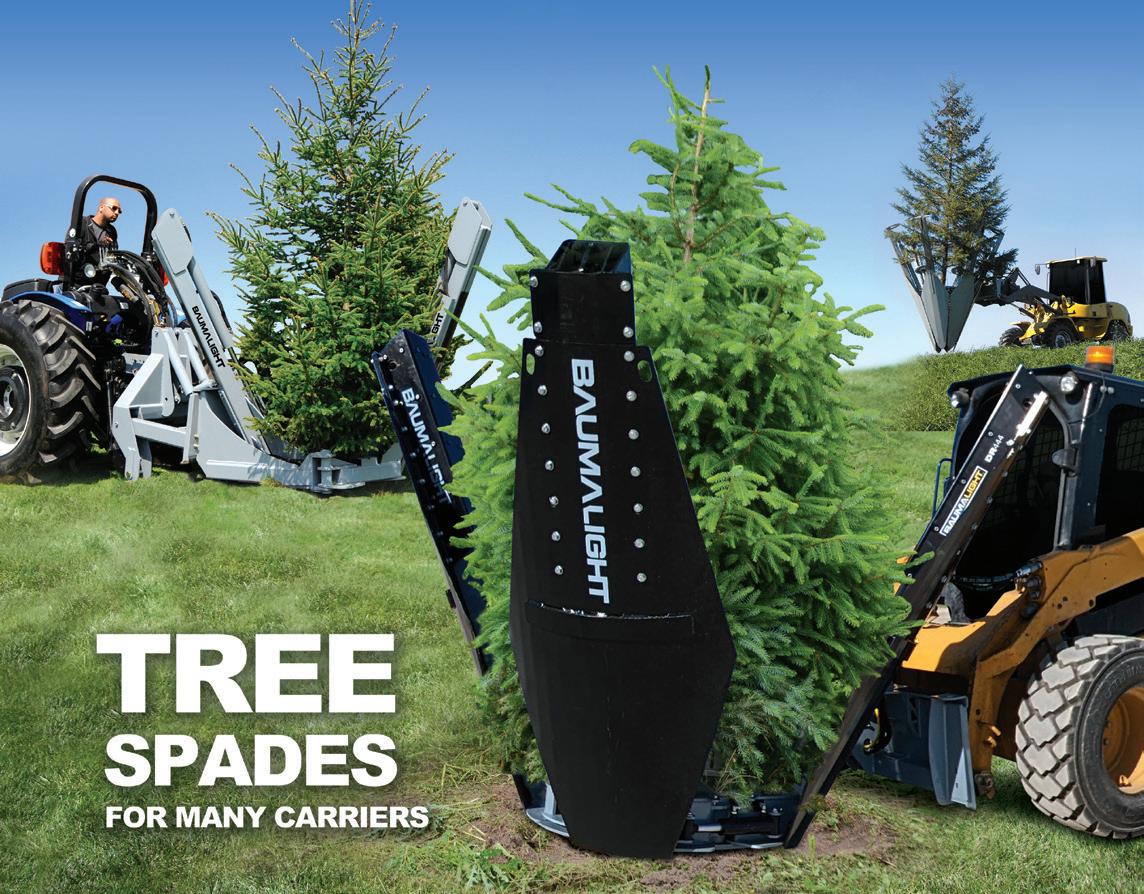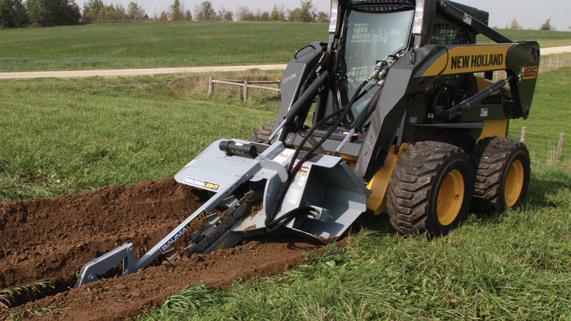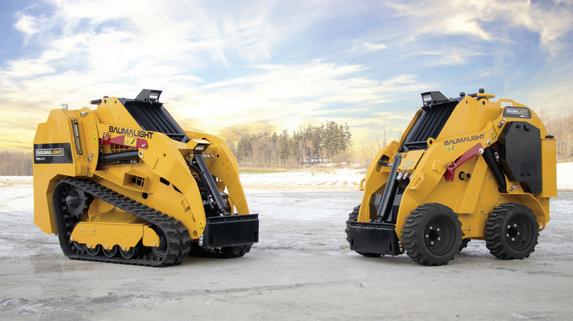Making the old new
Manitoba farmer boasts buckwheat’s benefits









Manitoba farmer boasts buckwheat’s benefits








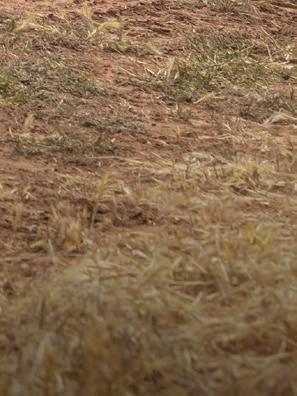
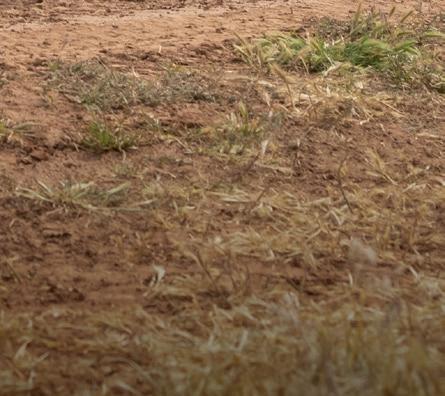


By
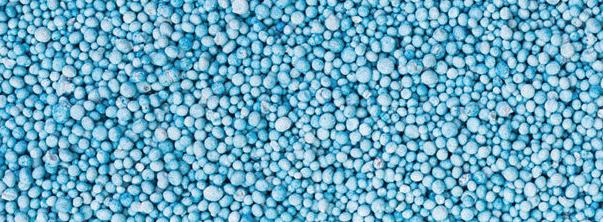
ONE Meridian 1620 Multi-Purpose Bin saved the average
Each 1620 holds approximately 100 tons of Urea. Price per ton based on numbers in Alberta. Numbers based on beginning of
Meridian SmoothWall Multi-Purpose Bins have allowed farmers to take advantage of seasonal savings, avoid spring lineups & road bans, and offered versatile fertilizer, seed & grain storage for decades. We’re excited to announce price reductions with available inventory!
Meridian Multi-Purpose Bins feature the industry’s best coatings. Meridian’s premium powder coating has a far superior salt-spray rating than liquid paint and is specifically designed for storing corrosive materials such as fertilizer. Meridian bins retain their value more than any other bin and are easily relocated, adding long lasting equity to your farm. To learn more, contact your local Meridian dealer today.
average prairie farmer $41,000.00 from 2017-2022 of month prices, not peak highs or lows.



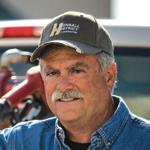

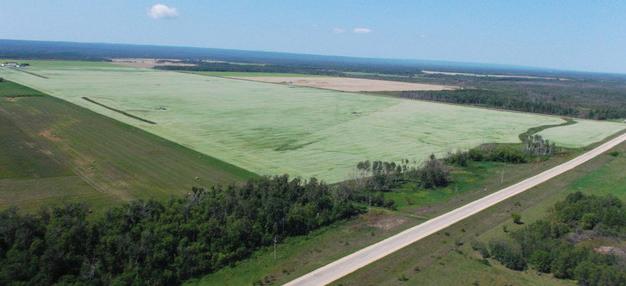



Get a new mode of action pre-seed for a new level of certainty.

To help maximize your canola’s yield potential, you need to put the smackdown on weeds early. Certitude® herbicide is the pre-seed solution that provides exceptional control of challenging weeds like kochia and volunteer canola, and it sharpens glyphosate’s performance on other difficult broadleaf weeds. Certitude is also the first Group 27 chemistry for canola, making it an ideal tool for managing herbicide resistance on your farm.
Visit agsolutions.ca/pre-seed to learn more about Certitude and the rest of the BASF pre-seed herbicide portfolio, including Smoulder® and Voraxor®
Always read and follow label directions.
Reduce the number of tillage tools in your operation with the Adjustable Gang VT. In the Fall, increase the gang angle for aggressive primary tillage operations that bury maximum residue. In the Spring, flatten the angle to minimize disturbance and run high speed preparing the perfect seedbed.
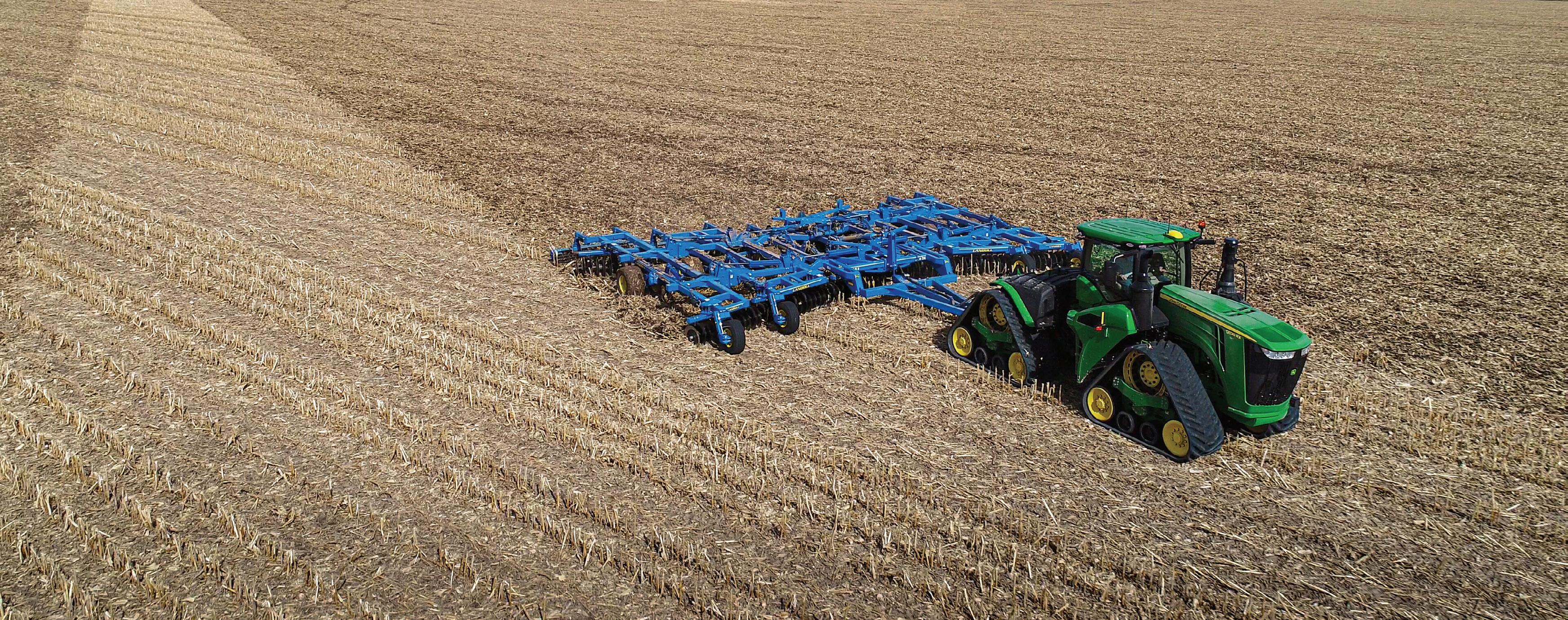


The Adjustable Gang VT is the versatile tillage tool that will deliver all year long. And when you purchase a product from Landoll, you know it is built with the rugged dependability that will improve your efficiency while preparing the ideal high yield environment.
Call us for more information or visit us online at www.Landoll.com

The levies paid by farmers on all the various commodities should not be refundable. There, I’ve said
While various tools and strategies are available to limit income taxes, payment isn’t optional or
What about your farmland taxes? You may not agree with how your municipal government spends your money, but you can’t request a refund and it will eventually come back to haunt you if you
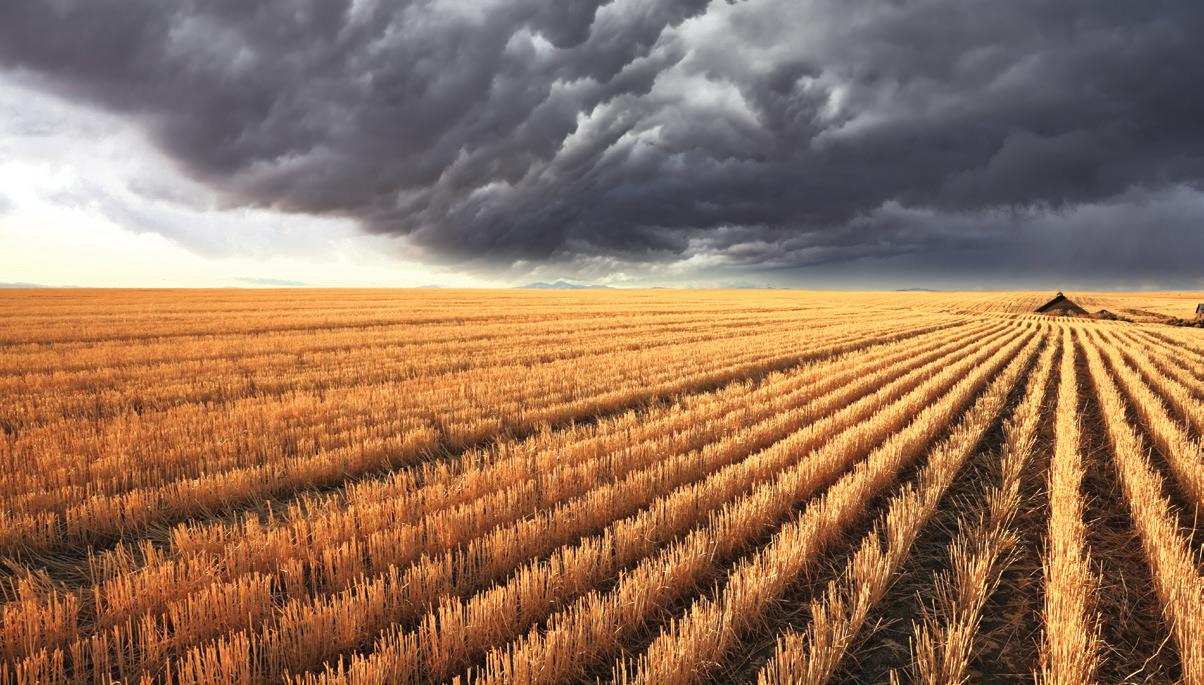
I would argue that commodity organizations, be it canola, wheat, barley, pulse crops or beef cattle, accountable than municipal governments. And yet, with most commodity groups, the levy is

Increasingly, producers are asking for their money back. It isn’t usually because they disagree with the organization and how the money is being spent. Mostly, they just ask for their money back because they can. They get the same benefits of new varieties, agronomic research, market development and policy initiatives without any of the cost.

This freeloading can have a snowball effect. Refunds for many groups used to be five per cent of the total or less. That’s creeping up to 10 per cent in some cases. A producer can apply for and receive refunds without anyone knowing. There’s no stigma to being a freeloader.
In some cases, accountants are urging farmer clients to regularly submit refund requests. This extra money makes the accountant look like a hero. Levy refund requests become such a routine practice that requests are sent even when the producer hasn’t sold any of that particular commodity in the past year.

It would be interesting to know how many accountants promote this practice. It would also be interesting to know how many go to the trouble of claiming the Scientific Research and Experimental Development (SR&ED) tax credit for the levies paid by their farming clients. The tax credit is for eligible research paid by levies.

One of the common complaints is that there are too many farm organizations. Commodity organizations tend to be lumped in with all the other farm groups. There’s some validity to the argument and in recent years, a significant amount of amalgamation has occurred because it makes for more efficient administration.
The Manitoba Crop Alliance serves corn, flax, sunflowers, wheat and barley. In Alberta, wheat and barley are now united as one commission. Sask Wheat will soon absorb the administration of winter cereals in the province. Saskatchewan Flax is maintaining its own board of directors, but administration will be handled by SaskCanola.
Farmer lobbying power has shifted dramatically over the years. Increasingly, governments are listening to what the major commodity organizations like canola, wheat and pulse have to say. These organizations have the resources to research topics thoroughly and they aren’t as politicized as groups such as the Western Canadian Wheat Growers Association or the National Farmers Union.
One of the first, if not the first crop commodity check-off was for pulse crops in Saskatchewan. When established, this levy was non-refundable and remains so to this day. All the groups that came after pulse had to prove producer support for a check-off and their levy had to be refundable.
The Saskatchewan Pulse Growers has one of the highest levies on a per acre basis and it also has great engagement with producers. All the growers of peas, lentils and the other pulse crops don’t always agree with the direction of the organization and there are frank discussions at the annual meeting and no doubt at board meetings.
The organization is stronger because the levy is non-refundable. Producers can voice their concerns, support director candidates of their choice or run for director positions themselves. What they can’t do is opt out and take their levies back.
Unlike the other commodity groups, there are no freeloaders.
Publishers
Pat Ottmann & Tim Ottmann
Editor
Trevor Bacque
Design
Cole Ottmann
Regular Contributors
Vincent Cloutier
Kevin Hursh
Tammy Jones
Copy EditorS
Lisa Johnston
Sales
Scott Shiels
Tom Wolf
Pat Ottmann pat@farmingfortomorrow.ca 587-774-7619
Nancy Bielecki nancy@farmingfortomorrow.ca 587-774-7618
Chloe MacEachern chloe@farmingfortomorrow.ca 587-774-7622
/farming4tomorrow
/FFTMagazine
/farming-for-tomorrow
/farmingfortomorrow
WWW.FARMINGFORTOMORROW.CA
Farming For Tomorrow is delivered to 90,720 farm and agribusiness addresses every second month. The areas of distribution include Manitoba, Saskatchewan, Alberta and the Peace region of B.C.
The publisher does not assume any responsibility for the content of any advertisement, and all representations of warranties made in such advertisements are those of the advertiser and not of the publisher. No portion of this publication may be reproduced, in all or in part, without the written permission of the publisher. Canadian Publications mail sales product agreement no. 41126516.
One of the common complaints is that there are too many farm organizations. Commodity organizations tend to be lumped in with all the other farm groups.
With Prospect™ herbicide, your canola will have the best start possible. Prospect tank mixed with glyphosate will give you game-changing performance against the toughest broadleaf weeds, including cleavers and hemp-nettle.

Visit your retailer today to book your Corteva Agriscience™ products for 2023.
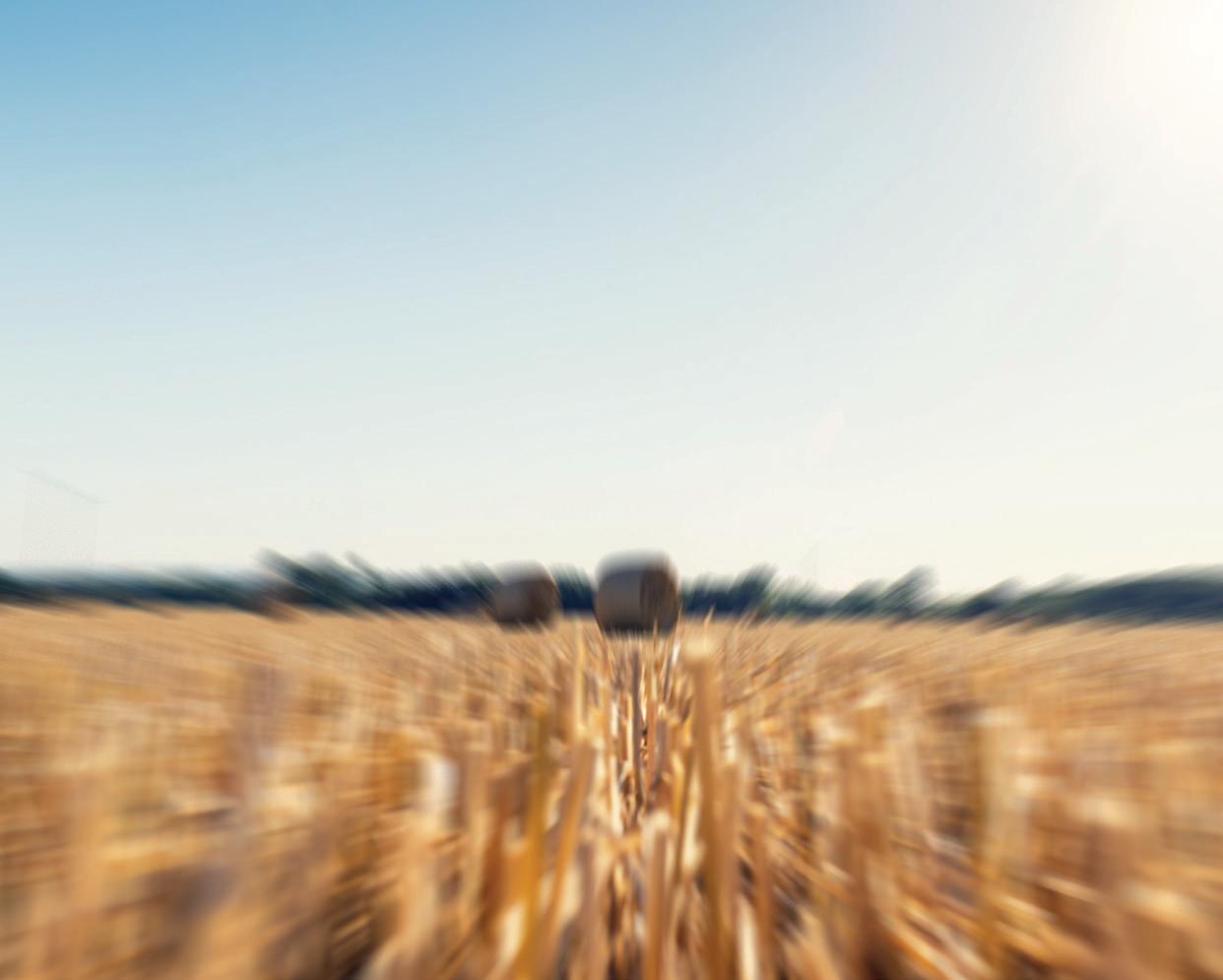
Scott Shiels
Scott grew up in Killarney, Man. and has been in the grain industry for 30 years. He has worked with Grain Millers Canada for 10 years and manages procurement for both conventional and organic oats for their Canadian operation. Scott is a newly elected board member for Farm and Food Care Saskatchewan and sits on several other committees on both the organic and conventional sides of the oat industry. Scott and his wife Jenn live on an acreage near Yorkton, Sask. Find out more at www.grainmillers.com.
As we roll into the spring following one of the best crops in decades, one thing is for certain, prices are coming down. Most, if not all, commodities are already significantly lower priced than they were in the fall, and this is likely to lead to some interesting seeding plans this spring. Let’s take a minute to break things down on the different crops to assist in planting and marketing decision-making.

We may as well start with canola, as it is the big player here on the Prairies. With prices still holding in the $18 to $20 range, or higher for specialty canola such as Nexera, we can be very confident that acres are going to climb this spring. If we manage to produce an average, or above-average canola crop on these acres, we will more than likely see prices fall back into the lower to mid-teens by fall. Demand for canola may be climbing, but we are not likely to see the increased crush capacity locally coming online for a while yet, and that could put us into an oversupplied situation, leading to both softer prices and increased carryout next year, both of which could be concerning longer term.
Next after canola always comes wheat. We had a pretty decent wheat crop here on the Prairies this year and prices have held up well all things considered. With fall pricing still at or above $10, it won’t surprise anyone to see wheat acres holding strong this spring. With the winter wheat crop in the U.S. not looking fantastic at this point, there may be an upside opportunity to wheat prices, even if we increase acres and have good production here in Canada. There are also other trouble spots around the world, so we do see good potential in the wheat market over the next 18 months.
The oat market is likely the one that has been hit the hardest by this year’s crop. With acreage up significantly and yields above average on most farms across the land, supply is just far too burdensome even with the rising demand numbers. We are looking at a potential carryout in oats of well over a million metric tonnes, over double the five-year average of just over a half million tonnes. These numbers will all contribute to keeping oat prices down in the $4 to $5 range, well below what we have seen in recent years. That will also force farmers to cut oat acreage back, and the trade is now estimating a reduction of 20 to 30 per cent across the Prairies. More than likely this will take production back to a near normal level and we will see prices come up a little into the early part of 2024.

One of the big question marks going into this spring seems to be barley, and where that market is heading. Prices today are relatively strong, but new-crop values have been difficult to acquire. Many longtime malt barley farmers are becoming a little concerned with the delay, stating that they have never waited this long to get their new-crop contracts. One has to assume that the big crop in the bin has something to do with these delays, as maltsters will be reluctant to contract too early if there is still a good supply in hand. The feed side of the barley market is even more unsure, as rarely do the feed buyers put much of a position on too early in the year.
Lastly, I want to quickly touch on the flax market, which has been very soft so far this year. Canadian flax production was up 37 per cent over 2021 this year, leading to a significant reduction in prices. However, values are still at traditionally high levels, making flax a profitable crop to plant this year. With a projected drop in flax acreage being reported by Agriculture and Agri-Food Canada, it may be a great time to seed a little extra flax and take advantage of a market that should strengthen in the new year!
Until next time…
Our newest dicamba herbicides deliver higher concentrated formulations. Roundup Xtend® 2 and XtendiMax® 2 herbicides with VaporGrip® Technology are higher concentrated formulations of the same herbicides you know and trust. They provide outstanding control of a wide range of weeds including Canada fleabane, common lamb's-quarters and kochia, as well as exceptional early-season short-term residual control for a clean crop during the crucial first stages. DON’T
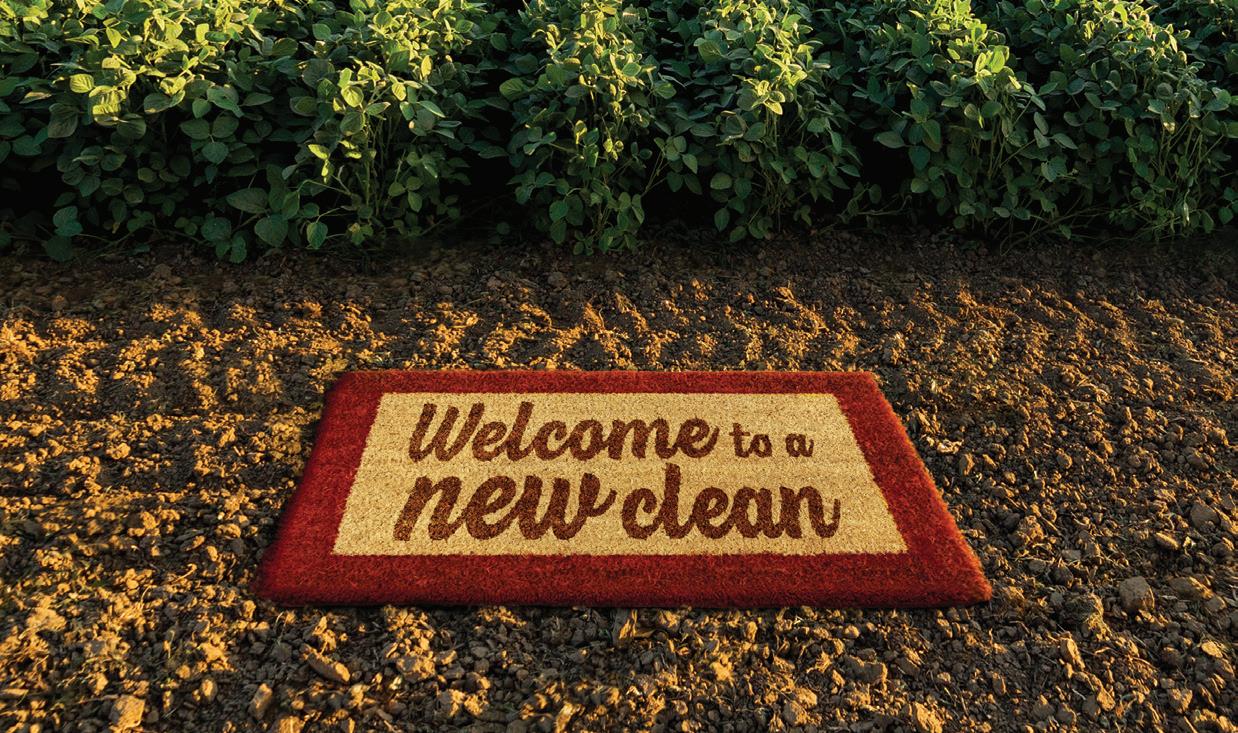

Bayer is a member of Excellence Through Stewardship® (ETS). Bayer products are commercialized in accordance with ETS Product Launch Stewardship Guidance, and in compliance with Bayer’s Policy for Commercialization of Biotechnology-Derived Plant Products in Commodity Crops. These products have been approved for import into key export markets with functioning regulatory systems. Any crop or material produced from these products can only be exported to, or used, processed or sold in countries where all necessary regulatory approvals have been granted. It is a violation of national and international law to move material containing biotech traits across boundaries into nations where import is not permitted. Growers should talk to their grain handler or product purchaser to confirm their buying position for these products. Excellence Through Stewardship® is a registered trademark of Excellence Through Stewardship.
ALWAYS READ AND FOLLOW PESTICIDE LABEL DIRECTIONS. It is a violation of federal law to use any pesticide product other than in accordance with its labeling. NOT ALL formulations of dicamba or glyphosate are approved for in-crop use with products with Roundup Ready 2 Xtend® soybeans. NOT ALL formulations of dicamba, glyphosate or glufosinate are approved for in-crop use with products with XtendFlex® Technology. ONLY USE FORMULATIONS THAT ARE SPECIFICALLY LABELED AND APPROVED FOR SUCH USES. Contact the Pest Management Regulatory Agency with any questions about the approval status of dicamba herbicide products for in-crop use with Roundup Ready 2 Xtend® soybeans or products with XtendFlex® Technology. Products with XtendFlex® Technology contains genes that confer tolerance to glyphosate, glufosinate and dicamba. Roundup Ready 2 Xtend® soybeans contains genes that confer tolerance to glyphosate and dicamba. Glyphosate will kill crops that are not tolerant to glyphosate. Dicamba will kill crops that are not tolerant to dicamba. Glufosinate will kill crops that are not tolerant to glufosinate. Contact your Bayer retailer, refer to the Bayer Technology Use Guide,

If one Manitoba farmer’s vision of the future comes true, the province his Ukrainian grandparents immigrated to will be the largest producer of buckwheat in Canada.
“It’s not happening today or tomorrow, but it might happen in my lifetime,” says Don Fyk, who farms about four hours northwest of Winnipeg, near Garland, Man.
Fyk is convinced buckwheat is a viable crop choice given its preferred growing conditions, its benefit to the environment, nutritional merits and gluten-free boast. These factors convinced him to plan and build a 5,000-square-foot buckwheat de-hulling plant, which opened in 2019.
Today, Don and his brother Ben seed about two-thirds of their 3,500 acres to buckwheat, making them the largest buckwheat farmers in Manitoba. Yet, it’s a far cry from the 30,000 acres they’d like to contract farmers to produce to meet what Fyk believes is a growing market.
“We used to supply Japan with buckwheat,” he explains. “China and mainly Washington State capitalized on that market, but there is room to fill the North American and European market.”
Likely originated in China, the broad-leafed annual probably arrived in North America with colonists in the 1600s. It’s a hull-covered fruit, not a cereal, the same family as rhubarb and sorrel. It’s been called a superfood, containing more protein than rice and more fibre, vitamins and less saturated fat than oats. There is no genetically modified buckwheat, either.
“We had ours tested,” says Fyk. “It’s extremely high in iron, which researchers think comes from our glacial till soil. The average is approximately 14 per cent iron content plus other minerals.”
The first Canadian-developed varieties were released by Agriculture Canada in 1955, two years after Fyk was born. Since then, newer varieties were developed to combat weather-related yield variability, to self-pollinate and to have unique starch properties.
Highly nutritious, buckwheat is a staple in other countries. In Japan, the flour is made into soba noodles. Eastern Europeans eat it as cereal or in side dishes. However, buckwheat isn’t as common in North America.
In Fyk’s view, that’s a shame and an opportunity for two reasons—the growing gluten-free market and climate change. Buckwheat needs little to no additional nitrogen and minimal pesticides. Fyk grows Kota and Koma varieties, both bred for larger triangular seeds.
He believes so strongly in future markets that 15 years ago he started working towards creating an on-farm de-hulling and packaging operation. Today, the plant wholesales clean, de-hulled seeds, packaged in 50-pound bags, or 2,200-pound totes, but he’s not stopping there.
When they came to Canada from Ukraine in 1904, Fyk’s grandparents lived on the edge of the Duck Mountains, largely because they could live off the land, growing cereals, a garden and eating wildlife. The same year, they established a homestead near Garland, a piece of land Fyk regained
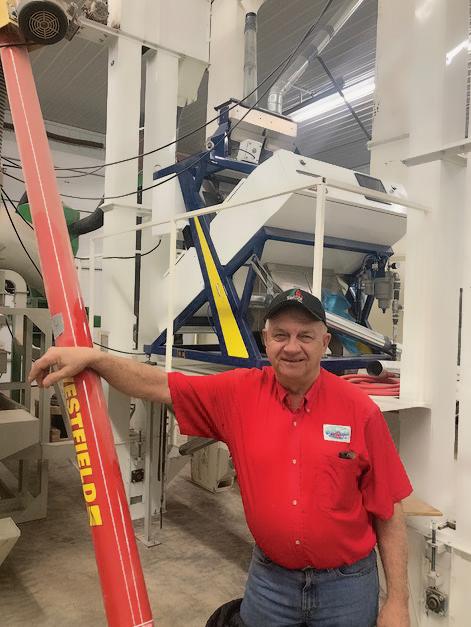
ownership of about five years ago. Although he doesn’t live there, the parcel is part of his history.
“At first, I just played at farming,” says Fyk from his farm home office where FYK Soba Inc. now includes the farm, the plant, heavy equipment construction and equipment repair, a provincially appointed vehicle safety inspection station and an aerial application business.
He recalls making more money trapping and playing in a band than farming, which helped pay for school. As many farm kids do, he developed skills early. His dad had him pushing snow with big equipment by age seven.
“In my early 20s, I already owned some heavy equipment. At 22, I had my first contract with the Province of Manitoba putting finishing touches on highway ditches and such. I made good coin and also became a Red Seal heavy-duty journeyman mechanic.”
Recognizing the need for diversification today, in addition to farming land he took over from his dad in the early '90s, he still repairs heavy equipment and is a senior vehicle safety inspector in Manitoba.

“Dad grew buckwheat, amongst other more conventional crops. Local stores would ask him for hulled buckwheat, usually around Christmas and Easter when Ukrainians use it more in traditional dishes. Dad used an old crusher. Then, my grandmother would spend hours picking through to get clean kernels. They’d sell it bulk and the store would repackage it for sale,” he recalls.
Today, price is an important factor in rejuvenating buckwheat, which has lost favour to crops like canola.

“Farmers today are a generation removed from knowing about buckwheat. They think it needs TLC but it’s more like a weed. It likes to be seeded into dry ground. There should be dust behind the seeder. Planted at the same depth as canola, it germinates in two to five days. Then it likes a little moisture, but prefers a drier growing season and it doesn’t need extra nitrogen. If these conditions are favourable, it will outgrow the weeds,” he explains. “Farmers are brainwashed that if you don’t put 100 pounds of fertilizer, you’re not going to get a crop.”
When Fyk consults with farmers considering buckwheat, he advises a soil sample. But 10 to one, he suggests they ditch fertilizer application the first year and think about less herbicide and pesticide. He’s found a yearly early cultivation in the spring to loosen the soil and start a growth of weeds, then a pre-burn with glyphosate before seeding effective. Usually, no pesticide is required. Using this crop management plant,
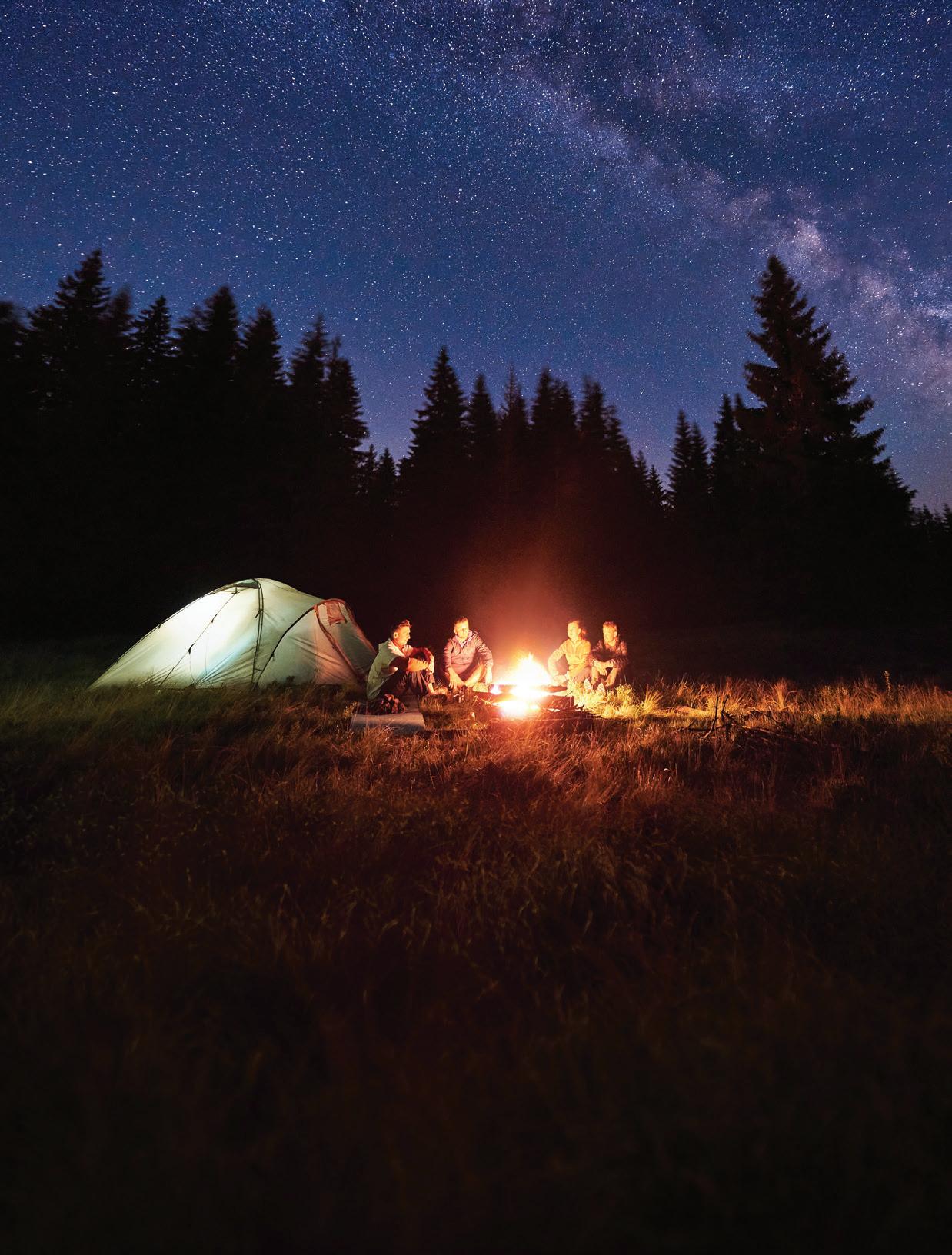























he’s seeded buckwheat seven years in a row in the same field, using less fertilizer and chemical, better for the environment.
As for yield, he says Manitoba crop insurance’s average is about 17 bushels/acre.
“We’ve had as high as 40 bushels per acre clean. One customer got over 40 bushels at $24 a bushel. Do the math. With seed, fertilizer and chemical, you’re looking at $425/acre for canola. Buckwheat seed is about $36 bucks an acre. Even with a total crop failure on both crops, you’re ahead with buckwheat because you didn’t spend on inputs.”
The brothers regularly grow canola, wheat, oats and buckwheat, which has been profitable for them. “The last couple years, we’ve averaged 25 to 30 bushels. I’m quite happy with that,” says Fyk.
Fyk says the death of the CWB forced him to learn how to market his crops.
“Until 2009, we depended on somebody else to do the marketing and sales of buckwheat, but as I got more involved with farm management and sales, I started looking for options. Prices weren’t what they should be. And, over time, several grain companies that were pooling and selling it merged until no one was willing to buy,” explains Fyk.
A few years prior, his high school friend, then a local mayor with a Japanese sister city, was welcoming someone from Japan who wanted to see buckwheat. Fyk obliged and gained one Japanese connection. Another important connection was with Ted Iizuka, president of Soba Canada in Toronto, Ont.
In 2009, Iizuka was in Manitoba to inspect a buckwheat purchase from a major grain company, but there was just one problem. “The product wasn’t fresh enough,” he says.
“Somehow, through his communication to Japan, he got my name and called me. I was flabbergasted.”
Surprised as he was, he welcomed a meeting and gained a customer. In 2009, Soba Canada began sourcing about 2,000 pounds annually of buckwheat from Fyk to make soba noodles.
“[Iizuka] ran a small de-hulling and milling operation from his
home in Mississauga and served his elite customers soba noodles once a week in his Toronto-area restaurant. He also sold soba flour and noodles to high-end customers in places like Montreal, New York, Los Angeles and San Francisco. With COVID-19, a lot of food businesses had to shut due to health regulations. Soba Canada folded and [Iizuka] returned to Japan.”
Always on the hunt for new markets, Iizuka helped Fyk establish connections with other companies in Japan like JBMA, Chuo Trading and Shimadaya Corporation.
“Since no one in Canada was pooling buckwheat, we went into business as Fyk Soba Inc.”
However, China was also increasing production and selling it cheaper, particularly as freight and shipping costs increased for Prairie farmers. The Japanese market slowed but with persistence Fyk connected with Birkett Mills in New York, and began to sell to them immediately in 2014. Birkett Mills processes Fyk’s buckwheat supplying Dr. Schär, a gluten-free Italian food company with facilities across Europe and United States.
“We hold an exclusive buckwheat contract for Manitoba and Saskatchewan to supply Birkett Mills,” he says. “Why cater to 120 million people in Japan, when you have a half a billion people in North America?” he asks rhetorically. “In 2016, we exported nearly 5,000 metric tonnes to the United States alone.”
More recently, Fyk responded to a call by the Ukrainian Embassy, shipping 140 metric tonnes of buckwheat seed to Ukraine.
“They sent multiple emails to companies, provinces and states looking for seed. I cancelled some other contracts to send seed there,” explains Fyk. “We worked with the Ukrainian Embassy in Ottawa and the president of the buckwheat association in Ukraine because they were sourcing seed from Kazakhstan and Russia. Of course, that’s not going to happen. We were the only one in Canada to do this.”
With support from Canada-Ukraine Foundation, Soba’s seed and freight costs were absorbed by the Foundation.
“It felt great to help,” he says.
“We worked with the Ukrainian Embassy in Ottawa and the president of the buckwheat association in Ukraine because they were sourcing seed from Kazakhstan and Russia. Of course, that’s not going to happen. We were the only one in Canada to do this.” - Don Fyk
Whether you’re getting an outside opinion on your farm transition, doing a bit of fine-tuning for your operation, or need a bit of financial support, we can help.
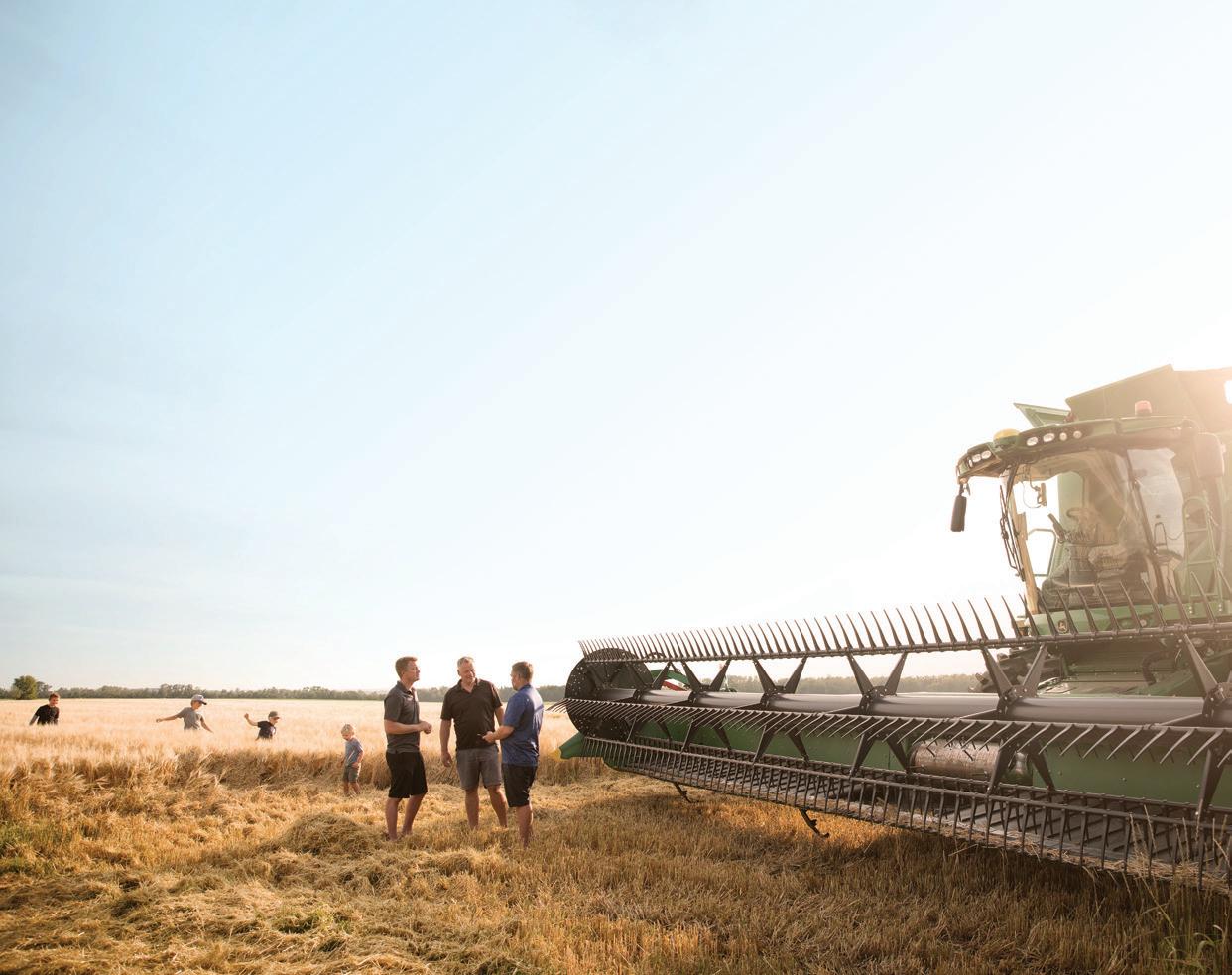
Talk to an agriculture account manager about your succession plan.

Canada remains a larger exporter of buckwheat than a processor. But that could change.
Fyk is continually testing new varieties looking for a larger seed more suitable for milling. He has varied seeding methods, with packer wheels versus floating the seed on. The latter, minus 60 pounds of fertilizer added to the packed crop, did better. Another area of study is trying to increase pollination rates on domestic buckwheat.
“Maybe there’s some tricks you can’t teach this old dog but maybe I can still learn some new tricks, too,” says Fyk with a grin. “We have a stone mill coming from Soba Canada. Stone milling is a slow process, producing more coarse flour, but great for soba noodles. If it runs faster than 14 revolutions a minute, the stone will heat. Another customer needs finer flour. The new mill would enable us to do approximately 1,000 pounds an hour.”
Although buckwheat arrives clean at the plant, a colour sorter removes any last gluten particles to maintain a high glutenfree standard.
“We commissioned MNP to do a business plan about five years ago when the plant opened that said dependency on glutenfree products will increase 12 to 15 per cent a year,” says Fyk.
One challenge may be changing the mindset of those using buckwheat in their products who believe the price will fall as more is grown. Fyk disagrees saying the marketplace has to pay more because buckwheat competes with other commodities for farm acres.
“COVID tightened demand for food. Food retailers could have kept prices higher, more in line with the real cost of farm production, but they didn’t train customers that food is cheap at the expense of farmers who take all the risk, with everyone down the line getting a free ride with a 25 per cent margin, give or take.”
Fyk still speaks his first language, an older form of Ukrainian taught by his grandparents. It’s helped him communicate with Ukraine and also with Canada’s newest Ukrainian immigrants, at least one he hopes to employ given their farm background. While he knows the world doesn’t go backward, resurgence could be positive.
“I wish I would have been a fly on the wall at the turn of the century when there was a home going up every quarter-mile. Today, our nearest neighbours are half-a-mile and three miles away. We farm today what 30 families farmed before. Do we need it?” he asks. “Maybe, given the way the world and economy is designed. However, I would still like to go back and have all those farmer neighbours.”

It has been a busy year for Darren Sander and his son, Tyler. As farmland values continue to trend upwards, it seems prospective buyers and sellers know who to call for trusted and knowledgeable advice: the father and son team at Saskatoonbased Darren Sander
 Farmland Real Estate
Farmland Real Estate
Born and raised on his family’s farm in Wilkie, Sask., Darren doesn’t just know real estate, he also knows the intricacies of farming life. Even more importantly, he understands the emotional journey involved with selling land that has been in a family for generations.
“When you come to someone’s door to sell their farm, it’s different from selling a home,” says Darren. “You are selling someone’s life work, likely generations of it. It doesn’t matter if it is five or 50 acres, it’s an emotional journey.”
Ever since he parked the combine to make the switch to farmland real estate in 2007, Darren has been honoured to join countless farm families on their transitional journeys. He was equally proud when his son, Tyler, joined the business in 2021, allowing Darren Sander Farmland Real Estate to increase its reach.
Having grown up watching his father toil the soil from 6 a.m. to past sundown, Tyler brings the same love of farming – and work ethic – to the business. Over the last two years, he has been carving out his own niche, attending farm shows and meeting with potential listers across the province. In addition to working with Darren on the paperwork and valuation side of the business, Tyler’s presence has also opened the door for implementation of new technology, everything from video editing to drone imagery – all to better serve ag clients.
“I like to think of myself as a ‘sponge’ right now,” Tyler says. “I am taking in all the information I can and learning the ins and outs of farmland sales in addition to working with clients in the residential sector. We recently attended the crop production show in which Farm Credit Canada held a very informative seminar on transition of farmland to the next generation as well as exit strategies for others who may be deciding to sell the farm.”
With Saskatchewan home to some of the most undervalued land in the country and revered as a great place to raise a family, farmland will continue to transition throughout the province – and Darren and Tyler Sander are available to help every step of the way.
“As realtors in the sector, we have aligned ourselves with several professionals from tax planning accountants to investment advisers as well as tax lawyers to help with every step,” concludes Darren. “Please feel free to call us if you are wanting more information about either selling or expanding your farm.”
Over this past year, I have been asked by several clients to do an analysis if incorporation is right for them. I am always intrigued by the views farmers have obtained about incorporation. They are rarely balanced.

Farmers’ thoughts on incorporation come from either an accountant, another farmer, a banker or a lawyer. All of these may have accurate advice but unless you look at all the angles, you will not be able to come to the correct decision for your farm.
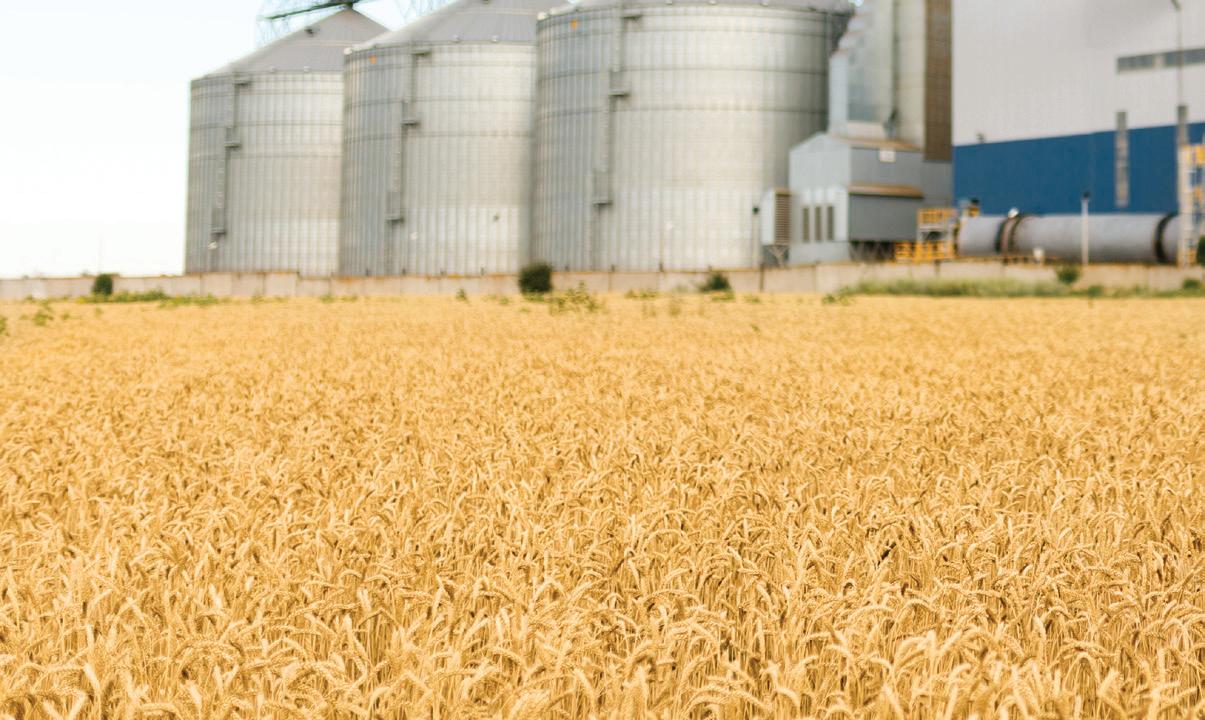
Status seems to be another aspect that comes with incorporation. We often equate a farm’s corporate status with success or size. The truth is anyone can incorporate. It has nothing to do with how many acres or cows you have. Nor does it have to do with success or profit.
I want to look at incorporation from the viewpoint of taxes, limited liability, succession and day-to-day management.
The biggest push towards incorporation comes from taxation. Once we get hit with a big tax bill, we look for solutions and often incorporation is suggested. There is no doubt that corporate income tax can be a lot lower than personal tax. Depending on your province it can be around 10 per cent. If you just paid 30 to 40 per cent income tax on a massive profit, it would be very appealing to pay 10 per cent instead. It is not that simple.
An accountant explained corporate taxes to one of my clients very clearly: if you want to take profit from your farm and use it personally, there is zero advantage to incorporate. The government has figured this out to the penny. If your farm made $200,000 profit and you are unincorporated, you will pay around 40 per cent income tax (approximately depending on your province). If your farm was incorporated you would only pay around 10 per cent, but then that profit is not yours to use however you want. That is the corporation’s money to use for corporate operations. If you would like to use that for a motorhome so you can travel, then you have to take the money out of the corporation. Without getting into details like shareholder loans, the only way to get that money is
to take a dividend. You will have to pay tax on that dividend. The corporation pays income tax and then you pay a tax on the dividend. Can you guess what this will equal? It will work out to roughly what you would have paid if you were unincorporated.
If you are going to keep the money in the corporation for future operation of the corporation, then you will be better off from a tax perspective. If you want to take the profits out for you to enjoy personally, then there is not much of a tax benefit.
Calculating income tax on a corporation is very simple because you just apply the tax rate to the profit and that is the tax that is owed. If a corporation make $1 in profit, it will owe 10 cents to the government. If you earn $1, you will owe nothing. You can probably earn upwards of $20,000 and pay almost no income
tax. With personal income tax, you get exemptions. Corporations do not so you must ensure you use these personal exception benefits.
Another area that is unique is capital gains exemption. Only people get this tax break, not corporations. I know of a farmer who began his venture in his early 20s. The first order of business was to incorporate. He then purchased as much land as he could, spending $30,000 to $50,000 per quarter-section. After 20 years of farming he decided to go in a different direction and he sold. You can image the appreciation that happened to his land. The millions that he sold it for was all taxed because the corporation had no exemption to capital gains. The farmer and his wife paid tax on $2 million more than they needed to had the farm not been incorporated. Accountants will not tell a story like that.

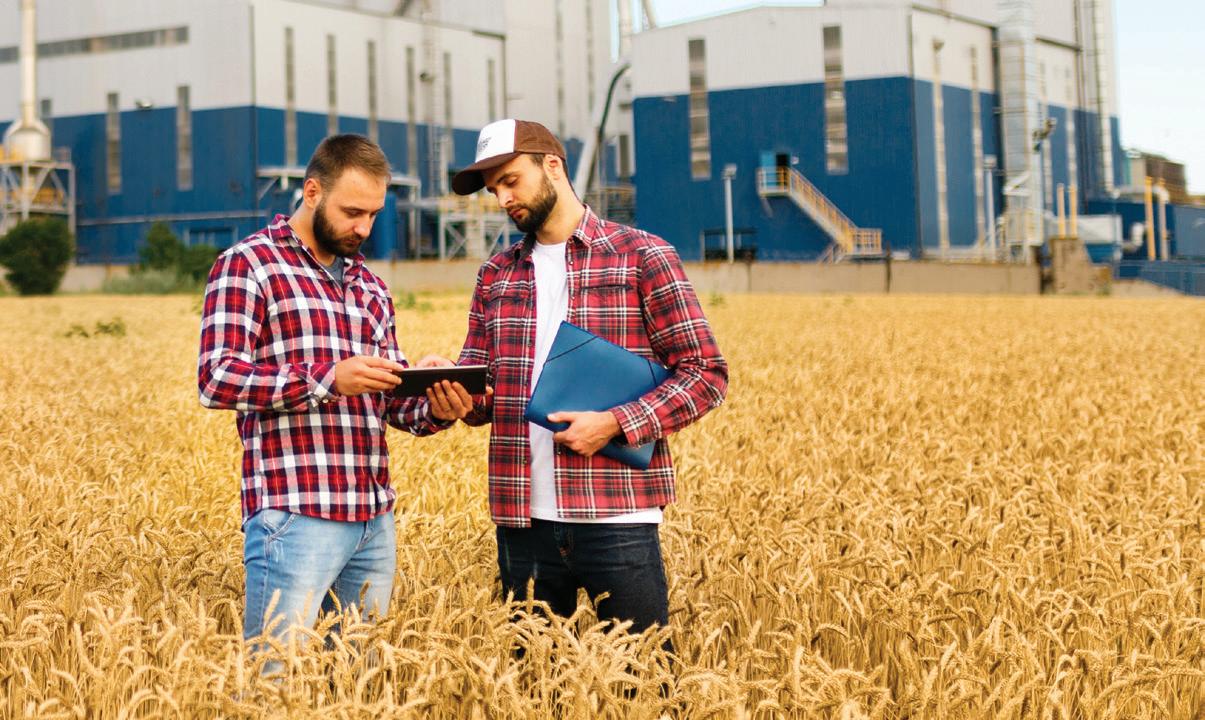
When you learn about corporations in business school, they preach about limited liability. In theory, this is correct. If your corporation has $500,000 in assets and gets sued, all the plaintiff can get is $500,000 because that is all there is. In reality, the biggest liabilities we will face are the debts we take on. If your corporation buys a $1.2-million combine and takes a loan for $1 million, the shareholders will be asked to personally guarantee that debt. In the event there is a default and the bank is in a loss position, they will come after the shareholders to pay the difference. Limited liability is not a big selling feature in my opinion. Perhaps in the event of a slip and fall situation it may be of a benefit, but not from a debt liability perspective.
Bringing children into the farm operation with a corporation may be simpler. You can assign a percentage to the child’s efforts and say they are a five per cent shareholder. They share in five per cent of the profits and the equity is partly theirs. You can easily increase, decrease or bring in other children with this method. Rather than have the kids rent land from a neighbour and then maybe buy an auger and a few parts for the combine as part of their contribution. With a corporate structure, you just run everything as one farm and assign the shares accordingly.
From a bookkeeping point of view, the biggest difference between your farm being personal and incorporated is when you are a personal farm, you record whatever you choose as income and whatever you choose as expenses (obviously you need to have invoices and receipts, but you decide what will be income and what will be an expense). Meanwhile, a corporation needs to account for every penny that gets deposited to the bank account and every penny that leaves the bank account.
Your accounting fees will increase. Your accountant will most likely prepare financial statements plus a corporate tax return. You still have to file a personal tax return. So all of this will be added fees.
Banks and credit unions usually charge more for corporate bank accounts than a personal one so this will cost more.
If your personal farm has been profitable for a few years, you may be starting to defer grain cheques earlier and earlier in the year. You also may be pre-buying upwards of 100 per cent of your fertilizer, chemical and seed in the taxation year prior to the year you are growing the crop. This can make running the farm more difficult. You miss out on marketing opportunities because you are in no rush to sell grain. You
risk spoilage because the grain is in the bin for years. These are not strong management practices. If you are always focused on income tax and not business management, then you need to change direction and perhaps incorporation is for you.
Incorporation can be a great management tool but you need to fully understand it and do it at the right time and the right way. If your farm is financially successful, you will incorporate at some time and it may be at the end of your farming career. This may seem counterintuitive but the last year you farm can be the most difficult because there is no next crop to spend your money on. It may not be 100 per cent inevitable, but it is pretty close that most successful farms will incorporate at some time. There are ways to incorporate that are better than others. There are assets that should go into corporations and others that should not. You need to have an informed team around you to guide you through the process. There are accountants out there that are better at this process than others. Make sure you fully understand the process. It is not something like hip surgery that you just leave to the experts. You need to understand it and if you do not, then that is the fault of the person leading the process. You have to run this business regardless if it is a sole proprietorship or corporation, so you need to understand it.
This is just the tip of the iceberg regarding incorporation. Make sure you consult your trusted experts before making this decision.
Incorporation can be a great management tool but you need to fully understand it and do it at the right time and the right way. If your farm is financially successful, you will incorporate at some time and it may be at the end of your farming career. This may seem counterintuitive but the last year you farm can be the most difficult because there is no next crop to spend your money on.
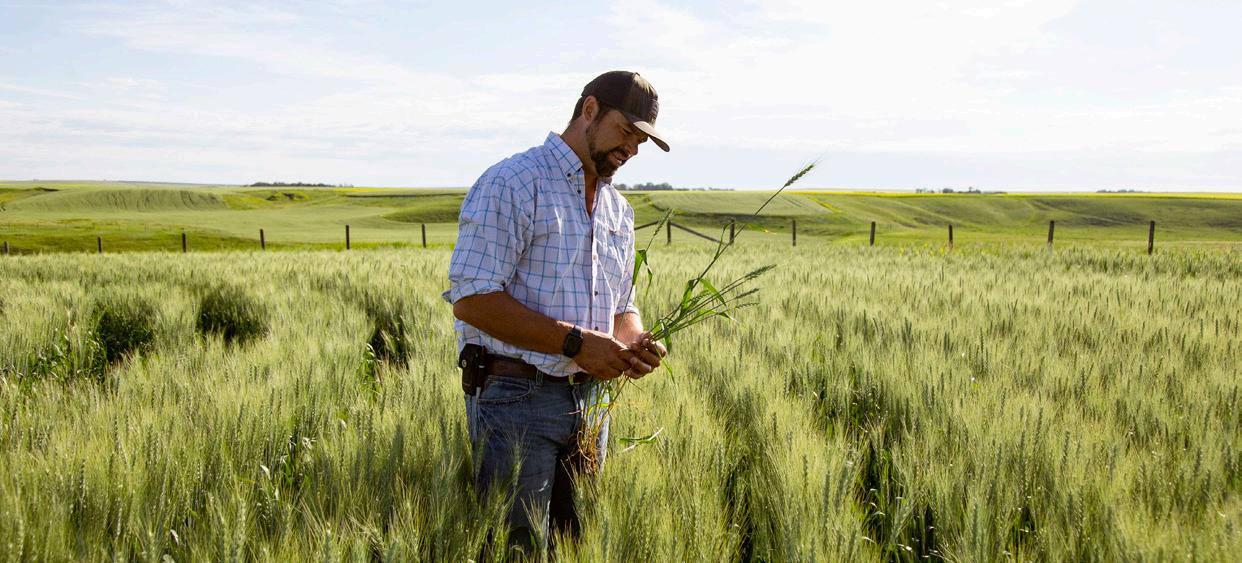
Tom Wolf grew up on a grain farm in southern Manitoba. He obtained his BSA and M.Sc. (Plant Science) at the University of Manitoba and his PhD (Agronomy) at Ohio State University. Tom was a research scientist with Agriculture & Agri-Food Canada for 17 years before forming AgriMetrix, an agricultural research company that he now operates in Saskatoon. He specializes in spray drift, pesticide efficacy, and sprayer tank cleanout, and conducts research and training on these topics throughout Canada. Tom sits on the Board of the Saskatchewan Soil Conservation Association, is an active member of the American Society of Agricultural and Biological Engineers and is a member and past president of the Canadian Weed Science Society.

One of the fastest moving new agricultural technologies is spray drones. Hardly a month goes by without some sort of new capability, some new features. It’s truly an exciting prospect to watch.
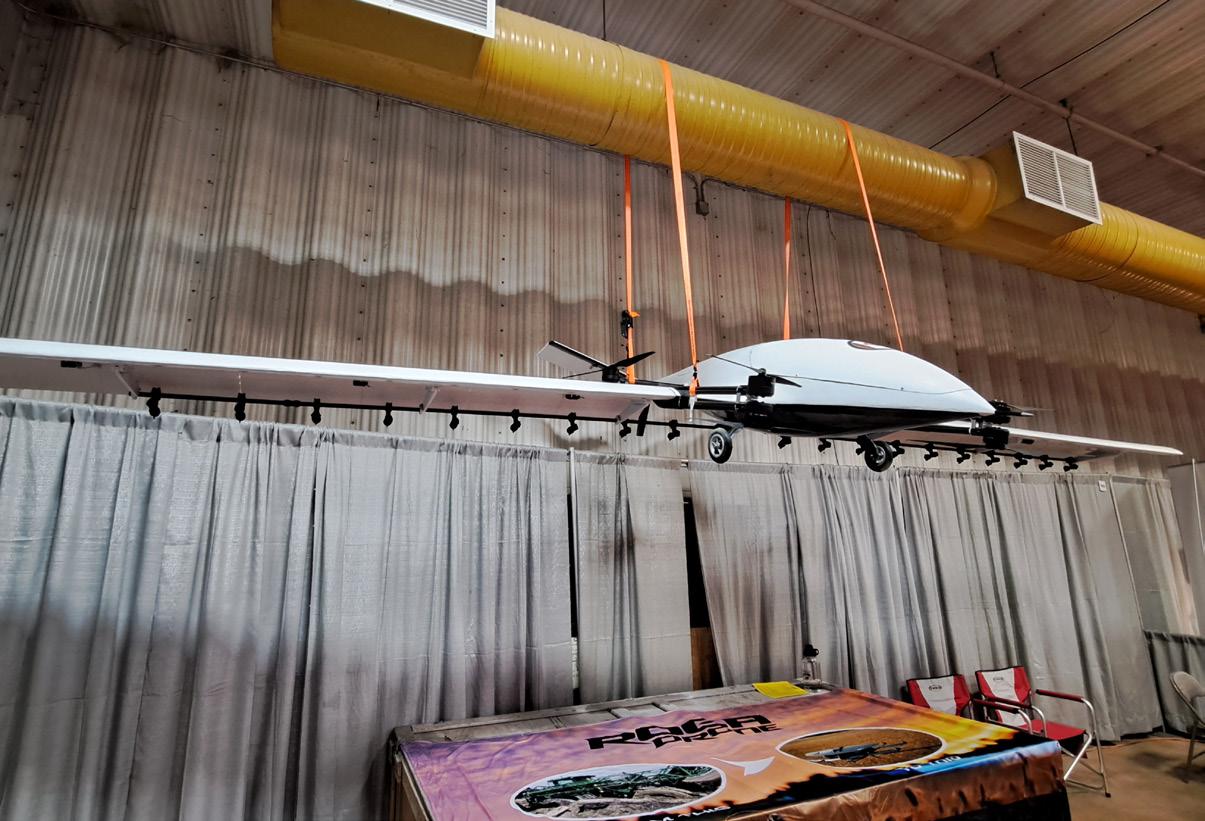
As with all things, there is good news and bad news to share. First the good news.
Drone capacity is on the rise. The early drones shipped with hoppers of eight to 10 litres. Part of the reason was to keep weight below 25 kilograms. Below this weight, pilot licensing requirements and flight restrictions are easier. Anyone with a basic RPAS licence (remotely piloted aircraft systems) can operate drones up to 25 kilograms. Above this weight, one requires an advanced licence, which is much more difficult to obtain. Current drones such the DJI T40 have a 40-litre hopper capacity, allowing more area to be covered per flight.
Swath widths increase with drone size. The limiting factor for electric drones is still battery power. Flight times of 15 to 20 minutes are possible, depending on the ferrying distance. As a result, larger drones don’t necessarily fly longer, but they spray wider, up to 30 feet for the DJI T30, and 36 feet for the T40.
Atomizers continually improve. The trusty flat fan nozzle works on a drone, but its operation depends on spray pressure. And spray pressure is not currently reported by drones, their application software relies on flow rate. Although the flow meters are remarkably accurate, the operator could operate the drone at a pressure that produces the wrong spray quality for the conditions.
Enter the rotary atomizer. Long a darling of the thinking applicator, these atomizers use centrifugal energy to create a spray with a tighter span, meaning fewer fine and fewer large droplets. Spray quality still depends on flow rate, but can additionally be altered with rotation speed. This means that if a faster travel speed increases the spray pressure, the effect on spray quality can be counteracted with rotational speed to keep everything more uniform.
Great job recycling your empty pesticide and fertilizer jugs, drums and totes. Every one you recycle counts toward a more sustainable agricultural community and environment. Thank you.
Ask your ag retailer for an ag collection bag, fill it with rinsed, empty jugs, and load up your jugs, drums and totes, to return to a collection site for recycling. In AB and MB, ask your ag retailer if it’s a jug recycling location. Details at cleanfarms.ca

NEW! Return empty seed, pesticide and inoculant bags for environmentally safe management. Find a collection loc ation near you at cleanfarms.c a
info@cleanfarms.ca @cleanfarms

Hybrid systems are entering the market. Rotary wings allow for precise positioning of aircraft and they provide downwash that helps spread out the spray pattern. Downwash also improves canopy penetration and could reduce drift, like air-assist, if used properly. However, rotary wings use a lot of energy, limiting battery life. When flown at the wrong height or speed, deposit patterns, drift and swath width will change. That must be managed and requires experience.
In comparison, hybrid drones have fixed wings for flight and rotary wings for take off and landing. The rotors just rotate into the position needed at the time. Fixed-wing drones will fly faster, possibly improving capacity while reducing the effect of the downwash. These systems are new, and much needs to be learned before we understand their various characteristics, but they offer a nice avenue into more productivity.
Drones are multipurpose. Virtually all drones have interchangeable wet and dry hoppers so they can be used to apply dry nutrients or seed as needed. That makes them quite versatile. But the newest spray drones have scouting-quality

cameras on board and can take high-resolution images while spraying. At the end of the mission, a very detailed picture of the crop emerges, with much higher resolution than the higher elevation scouts produce. Other sensors on the drones can be used for variable rate application of nutrients, or even for spot spraying weed patches.
Now for the bad news. It’s still not legal to apply mainstream pesticides using drones in Canada, and it may stay that way for a while yet.
Drone application remains illegal in Canada. The main reason is that the Pest Management Regulatory Agency (PMRA) has declared drones to be a unique application method, separate from ground sprays and aerial sprays from piloted aircraft. This has triggered the need for risk assessment data for spray drift, efficacy, bystander exposure and crop residue. It’s a fair decision—drones produce finer sprays than any other existing system, they potentially use lower water volumes by necessity, they create a less predictable deposit due to rotor downwash and more. Many current pesticide formulations are designed for five to 10 gallons per acre; this creates a certain concentration of surfactants and products that interact with plant surfaces or that change the potency of drift. Altering this by a factor of five can have undesirable outcomes. Yes, aircraft also use lower volumes, but more in the area of two to five gallons per acre. Drones could cut that in half again, and that warrants study.
Registrants haven’t rushed to study drones. Most major manufacturers of pesticides have a small drone program to get their feet wet, and most have applied for research authorization from the PMRA to study them. But the decision to register a drone use for a pesticide has much to consider. Is it worth it to generate the required data set for the regulators? Will drones amount to a lucrative new market for product? Do we have the resources and expertise to service this new market? The answers to such questions are clearly complex and much remains unknown. The registrants’ caution is understandable. There may be a small portfolio of available products. Anyone thinking that a fleet of inexpensive, nimble drones will replace their ground sprayer is banking on the registration of a large number of products by the registrants. The most likely products to be registered are fungicides, for which drones would offer several advantages in canopy penetration and spraying in tight time windows due to, say, wet weather.
Another obvious use is in industrial vegetation management where rough terrain or remote locations make it difficult to use wheeled sprayers. Or vector control with larvicides, which, incidentally, comprise the first pesticide registrations for drones in Canada (two microbial mosquito larvicides were approved for drone use in October 2022).
Agriculture is changing fast. And you’re looking toward a future that’s more profitable for your operation and sustainable for your family.
Whatever you're planning next, our specialized Agriculture team can provide the right flexible financing solutions to help you get there.
atb.com/LetsTalkAg

We understand what’s on your mind, because we live and work here too.
But it seems unlikely in the short term that a farmer would have their pick of products to apply by drone any time soon. And this means that a drone would remain a supplementary tool on the farm, not the main workhorse.
Regulatory hurdles are substantial. Not only is a pilot required to be licensed to use drones, a pesticide application also requires a specialized flight operations certificate (SFOC). SFOCs are required if:
• you are a foreign operator (i.e. not a Canadian citizen or permanent resident);
• you want to fly at a special aviation event or an advertised event;
• you want to fly closer to a military airport;
• you want to fly your drone beyond visual line-of-sight;
• your drone weighs over 25 kilograms;

• you want to fly your drone at higher altitudes;
• you want to fly your drone carrying dangerous or
hazardous payloads (i.e. chemicals); and,
• you want to fly more than five drones at the same time.
SFOC applications are fairly easy to fill out. Aside from identifying the drone and the pilot, the application needs the purpose of the mission, the location of the mission and the time period of the mission. The problem is that it may take up to 30 days to hear back for simple missions and double that for complex missions. If the SFOC is not granted, you can’t fly. You can’t decide to spray a field at the last minute.
The news is clearly a mixed bag. We have it all—exciting technology, obvious niche in the marketplace, significant regulations, slow process. In the meantime, spray drones are legal to purchase and relatively inexpensive. And we know they are being purchased. Canada doesn’t have a strong compliance system within the PMRA, so it’s hard to know how much pesticide spraying is being done illegally, or how perpetrators will be treated by the law.
The reputation of the industry once again rests with hope that good decisions are being made by conscientious individuals.
Tammy Jones B.Sc., P.Ag
Tammy Jones completed her B.Sc. in crop protection at the University of Manitoba. She has more than 15 years of experience in the crops industry in Manitoba and Alberta, with a focus on agronomy. Tammy lives near Carman, Man., and spends her time scouting for weeds and working with cattle at the family farm in Napinka.
A weed that seems to be gaining the upper hand across Western Canada is cleavers. Cleavers are problematic for multiple reasons: they are a serious contaminant and downgrading factor of canola, and they can reduce crop yields, cause lodging and impede harvest. Not only can cleaver plants climb up and then weigh down a crop resulting in lodging, but the plants will also wrap around equipment which impairs how the crop swaths or feeds into the combine. In addition, cleavers can stay green and tough in otherwise dry crops.
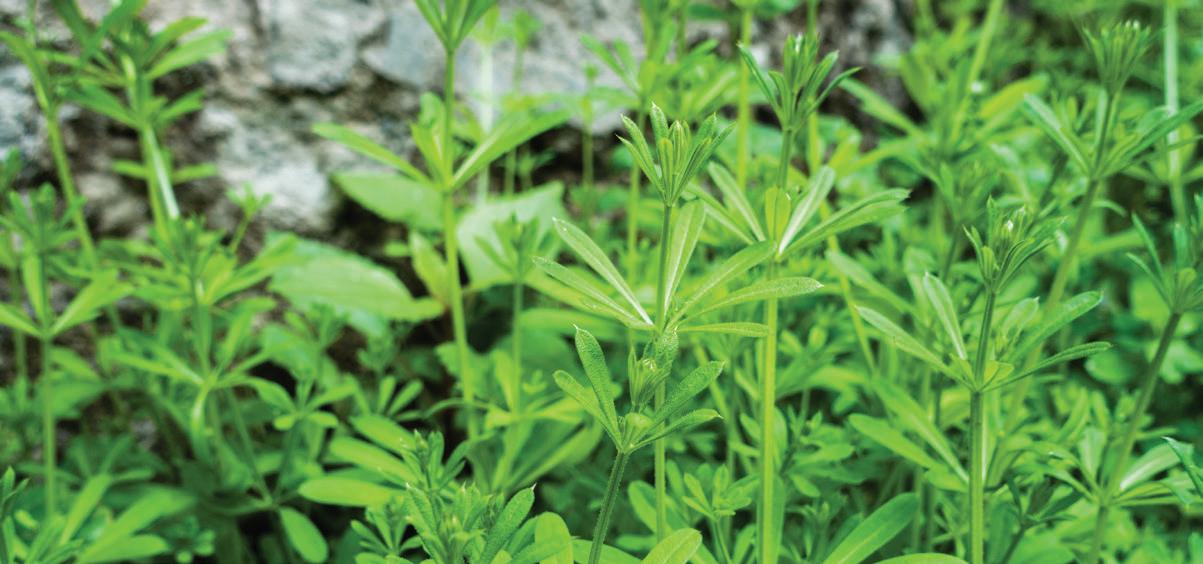
The Canola Council of Canada suggests that cleavers are a challenge to manage for a number of reasons, including herbicide resistance, climate changes and moisture conditions interfering with the timing of herbicide applications. Digging into the biology of cleavers will help to understand them better.

There are two Galium species that are challenging to differentiate and generally referred to as cleavers. Galium aparine L. which is the common name of catchweed bedstraw and Galium spurium L. or false cleavers, are distributed across Western Canada. Catchweed bedstraw is considered to be native, while false cleavers is an introduced weed that seemingly spread across the Prairies primarily through contaminated rapeseed crops. Andrea De Roo and Dr. Chris Willenborg with the College of Agriculture and Bioresources at the University of Saskatchewan have studied cleavers extensively and determined that false cleavers is the predominant Galium species in current cropping systems. False cleavers can germinate in slightly cooler temperatures and prefer brighter growing conditions rather than the shady conditions favoured by bedstraw. The team at the University of Saskatchewan also confirmed that false cleavers should be considered a facultative winter annual, as all of the populations they studied were able to emerge in the fall or spring.
Cleavers are typically prostrate or a climbing plant since the stem is rather weak. The small leaves appear in whorls, usually ranging from four to eight leaves per node on the square or four-sided stem that is covered in hairs like Velcro. The plants can get quite long or tall, up to two metres in length. While cleavers are not the most prolific weed, seed production estimates range from 300 to 3,500 seeds per plant. The seeds are not usually dormant but can survive for up to three years in dry soil and manage to survive passage through digestive tracts.
The increasing abundance of cleavers indicates that current control strategies need to be adjusted. The two species look very similar, with similar growth patterns and can be controlled with similar herbicides. Biological changes in cleavers that may be the reason for increasing abundance are:
Financial planning and risk management are critical elements to the success of any operation. Partnering with experts will put you and your farm on the right path. AFSC’s knowledge and understanding of the challenges in farm planning, risk mitigation and financing can help you get there.
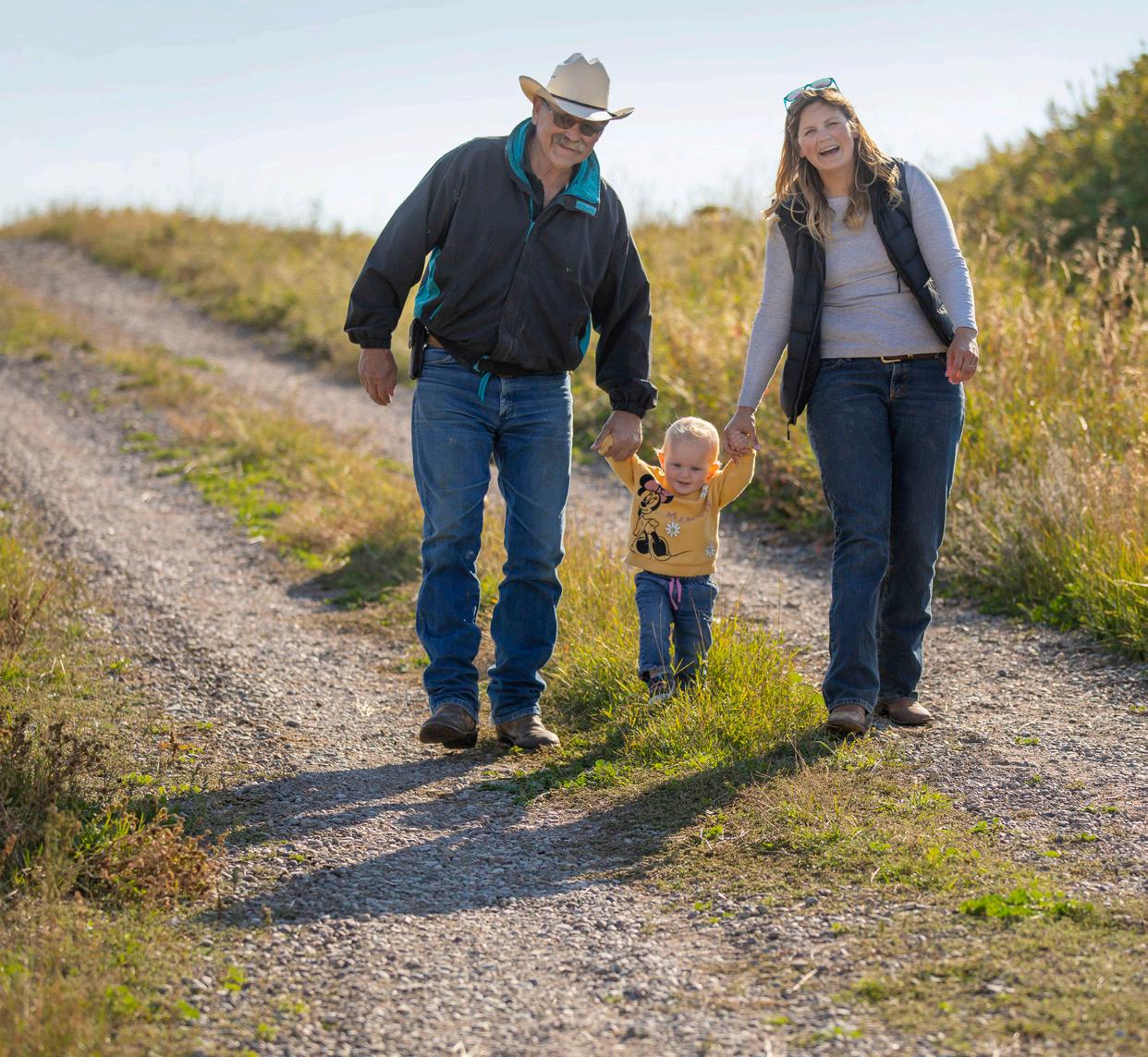
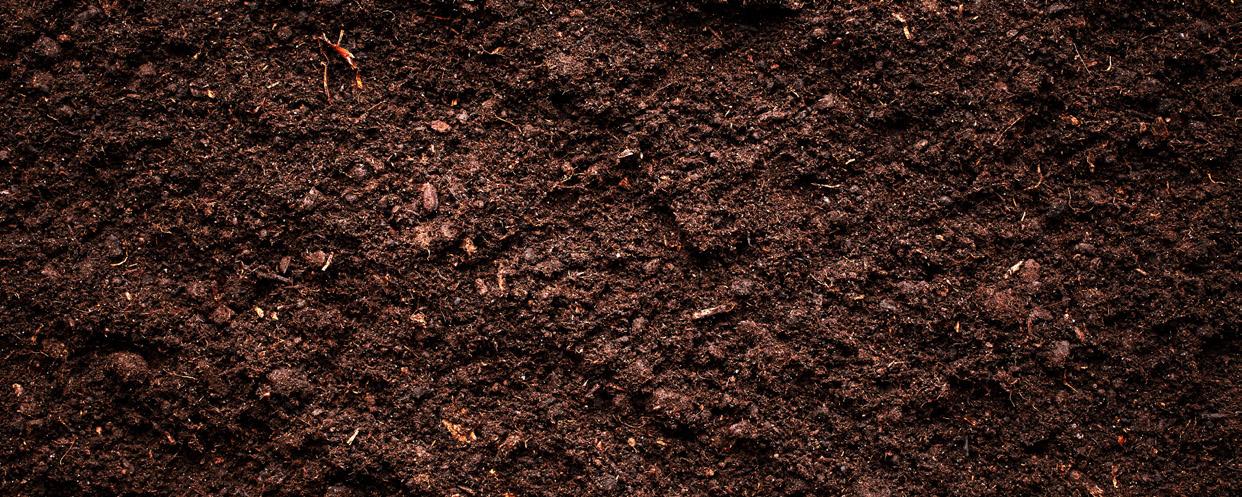
INSURANCE | LENDING | INCOME STABILIZATION
AFSC.ca
1. Facultative winter annuals are increasingly problematic with climate changes. The term “facultative” means optional or discretionary. As mentioned earlier, cleavers are a facultative winter annual which means they have the ability to germinate in the fall or the spring. Fall germinating cleavers have been shown to survive most current winter conditions, and if left until spring, can be quite challenging to control. In addition, cleavers can germinate at very low temperatures in the spring, between 2 C and 4 C, and grow well in relatively cool conditions. So even though little else is growing, cleavers may be outside of the window for effective control by the time a pre-seed burn-off is contemplated or even larger if relying on a post-emergent herbicide application. Herbicide labels indicate control of cleavers through a small range, sometimes up to nine whorls, but the most effective way to control any weed is to spray early, which, for cleavers, is as early as two to three whorls. With fall-emerging cleavers, a fall herbicide application would be recommended. As growth stages increase, there may need to be an adjustment to a higher rate of herbicide, as outlined by the herbicide label, to ensure control.
2. Herbicide resistant cleavers have been confirmed to both Group 2 and Group 4 herbicides in Western Canada. Add to that, Hugh Beckie (formerly with Agriculture and Agri-Food Canada) has predicted that cleavers are near the top of the list to develop glyphosate resistance. It is important to scout to observe potential product failure with cleaver control. Part of the challenge is that whorl of small leaves, with a tricky leaf surface that is best covered with higher spray pressures and water rates to ensure proper coverage. While cleavers are primarily self-pollinated, the risk of spreading herbicide resistance is through those sticky stems and seeds that cling to many objects, and also the twining stems that wrap around machinery. Spreading seeds helps cleavers prevail by increasing genetic diversity in populations within a field as well as spreading resistant biotypes.
With these two biological considerations in mind, the general weed management strategies all apply:
- Spray when weeds are small—two to three whorls.


- Incorporate integrated weed management tactics. Cereals provide a great opportunity to address cleaver control to reduce pressure in future rotational crops.
- Where there are rate ranges labelled for a herbicide (such as glyphosate, glufosinate or even fluroxypyr)
select herbicide rates based on the weed staging.
- Use herbicide mixtures that provide multiple modes of action to ensure that in-crop and pre-seed/fall-applied options continue to remain effective.


- In dry soils, the seeds can remain viable for several years, so tillage is not likely an effective control measure.
That being said, studies indicate that false cleavers are becoming the predominant cleavers species in Western Canada. This weed is extremely versatile, with a wide range of conditions that allow for germination and growth. Successfully controlling cleavers near the time of emergence will mean looking at fall and spring weed control options, using pre-seed herbicides with some flushing control or

A lot has happened for Prairie farmers since the 2021 droughtladen growing season left countless contracts unfulfilled.
It is an understatement to say that grain contracts have been widely spoken of over the last two years but that doesn’t mean that contract wording and terms of conditions had not been a concern for farmers even before 2021.
The days are gone where farmers could drive up to an elevator with a load of grain and get a fair price for it without a contract, says Glenn Wright, a grain farmer and lawyer from Vanscoy, Sask. The reality is that grain buyers need to fill their quotas just as much as farmers need to sell their grain.
This is why Wright wants to see a better relationship between the two.
Wright was instrumental, along with Strasbourg, Sask., farmer Brent Johnson, in developing the wording of a resolution that was passed by five Saskatchewan commodity groups during their 2022 AGMs. The resolution called for fairer contracts, the removal of administration fees from contract buyouts after crop failures, a pricing formula for subsequent buyout options and also stipulated these changes be made across all grain contracts signed in Saskatchewan and the rest of Canada.
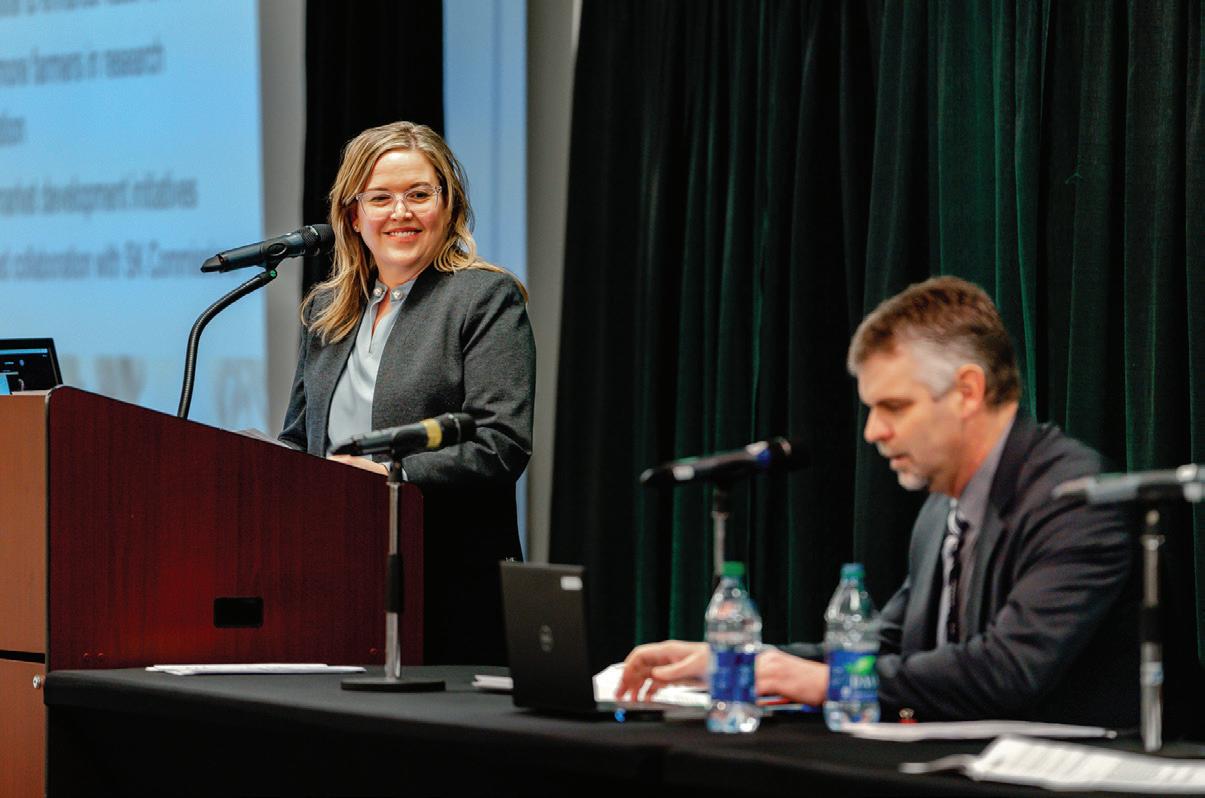
Having a law background, Wright received a lot of calls during the drought from farmers who were trying their best to alleviate
some of their contract issues early in the growing season. While contracts were already one-sided in favour of the grain buyers, farmers didn’t have the tools to negotiate buying out the contract.
“Many of the farmers are quite frustrated because they phoned and tried to get out of their contracts when they understood what the price spread was because they thought that it was a risk management tool,” says Wright. “They were prepared to buy out their contract [in early June and July], but most of the grain companies didn’t allow them to.”
While that resolution has reached its one-year mark, producer organizations are not giving up in Saskatchewan and they can’t if they want to see things change.
“We have to find some way to collaborate and co-operate with each other to come to some evolution of these contracts that’s going to protect farmers and make it more simple and easy for them to understand,” says Wright. “There is value in us having some standard clauses and terms that are in the contracts across all of the grain companies.”
Marlene Boersch, co-founder of Mercantile Consulting Venture, says part of an analysis they completed in February 2022 included recommendations for fairer grain contracts but, unfortunately, she doesn’t expect anything positive for
farmers to actually come of it if grain buyers aren’t willing to come to the table, which, so far, they are not.
“In my recommendations, the first ideal situation would be that you can actually sit down with grower representatives and buyer representatives and work this out and actually improve it for both sides,” she says. “What we are seeing is that the companies enjoy having contracts that they very much determine that cannot be negotiated.”
While Boersch also encourages a thorough reading of all contracts, she recognizes the difficulty of it since there is neither clarity nor understanding in the wording. Grain farmers still need to sign them nonetheless without understanding and negotiating power.
“One of the problems is that, even when you read them carefully and you highlight two or three issues that you either cannot do, or that are not clear, or that you would like to change, in general; and I can only say, in general, the counter party will say, ‘Well, that’s nice, but head office determined that’s the contract and that’s that. Take it or leave it.’”
Without a standard working relationship with grain companies, commodity groups have had to step up to offer aid to their farmers, especially following 2021.
The Canadian Canola Growers Association (CCGA) has seen understanding of contracts grow in the past 10 years of developing resources for farmers. These have included a
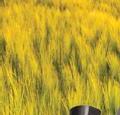





Our complete line of ground engaging tools fit most makes and models of seeding, tillage, and specialty machines.
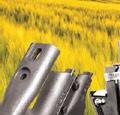
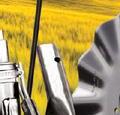
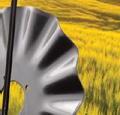

Seed Openers
Seed Openers
Fertilizer Knives
Niaux 200 Disk Blades
Niaux 200 Disk Blades
Seed Boots
Fertilizer Knives




Speed -Loc™ Quick Change Products
Seed Boots
Replaceable Tips
Speed-Loc™ Quick Change Products
MA X LIFE™ Products:
Replaceable Tips
Deep Rippers
Shank Savers
Deep Rippers
Sweeps & Spikes
Chisel Plow Points
Shank Savers
Blue Armour Sweeps & Reversible Chisels
Sweeps & Spikes
Chisel Plow Points


Blue Armour Sweeps & Reversible Chisels
• Harrow Tines
MAX LIFE™ Products:
• Harrow Tines
• Sweeps & Spikes
• Scrapers
• Sweeps & Spikes
• Threshing Pins
• Scrapers
• Power Hiller Tines
• Threshing Pins
• Power Hiller Tines


We’re committed to keeping your operation running smoothly with North American-made products backed by our Warranty, Performance Guarantee and Gold Standard Customer Service
Talk to a BT T dealer or contact us at 1.800.878.7714 or info@tillagetools ca.


We’re committed to keeping your operation running smoothly with North American-made products backed by our Warranty, Performance Guarantee and Gold Standard Customer Service.
Bourgault Tillage Tools
tillagetools ca
VISIT US AT BOOTH 80 & 96 NEAR THE WEST ENTRANCE @ SPOKANE AG EXPO or contact us at 1.800.878.7714 or info@tillagetools.ca.
“We have to find some way to collaborate and co-operate with each other to come to some evolution of these contracts that’s going to protect farmers and make it more simple and easy for them to understand. There is value in us having some standard clauses and terms that are in the contracts across all of the grain companies.”
- Glenn Wright
practical guide on grain contracts and a recent webinar session with lawyers from D’arcy and Deacon LLP in Winnipeg, Man.

As a senior manager for policy development at the CCGA with files on trade and marketing, Janelle Whitley has seen the depth of problems that farmers face, and the drought in 2021 has brought many long-standing issues —such as delivery terms around liquidated damages, production shortfalls and a lack of a dispute resolution mechanism—to the forefront.
Just like other crops, canola production was down 40 per cent in 2021, she says, with the sheer volume of contract shortfalls creating a unique and unprecedented situation for farmers and grain buyers alike.
Moving into the future of grain contracts, Whitley says they do not have a good source of information for how farmers will change their selling habits after 2021 specifically, but they are hearing from canola farmers their apprehension of getting burned another time. A lot of that will depend on what the growing season has in store, explains Whitley.
“Farmers are just in the stage of looking at some of their contract options and looking at 2023,” she says. “Hopefully what happened in 2021 and 2022 will be behind us and we’ll have
a crop that we’re able to kind of get back to some of our historical acres and yields.”
In a survey released in November of 2021 the Agricultural Producers Association of Saskatchewan reported that three-quarters of their 200-plus respondents said they were unable to fulfil their contracts and paid penalties and administrative fees between $20,000 and $300,000 with interest rates on their unpaid contracts as high as 19 per cent. A quarter of respondents also reported difficulty in contacting grain buyers to resolve issues and respondents raised numerous concerns on “a lack of transparency in calculating buyout and administrative fees … wide disparities in settlement costs between different companies.”

The analysis by Mercantile Consulting Venture was commissioned by SaskCrops, “an informal alliance of all the Saskatchewan producer crop commissions,” as defined by Wright.
The document was discussed again at the various commodity groups’ 2023 AGMs at the beginning of January. While much of the work was done in Saskatchewan, Boersch says these same issues are happening across the Prairies with those farmers dealing with the same contracts from the same grain buyer companies.
The 2022 growing season saw record highs for farmers across the country.
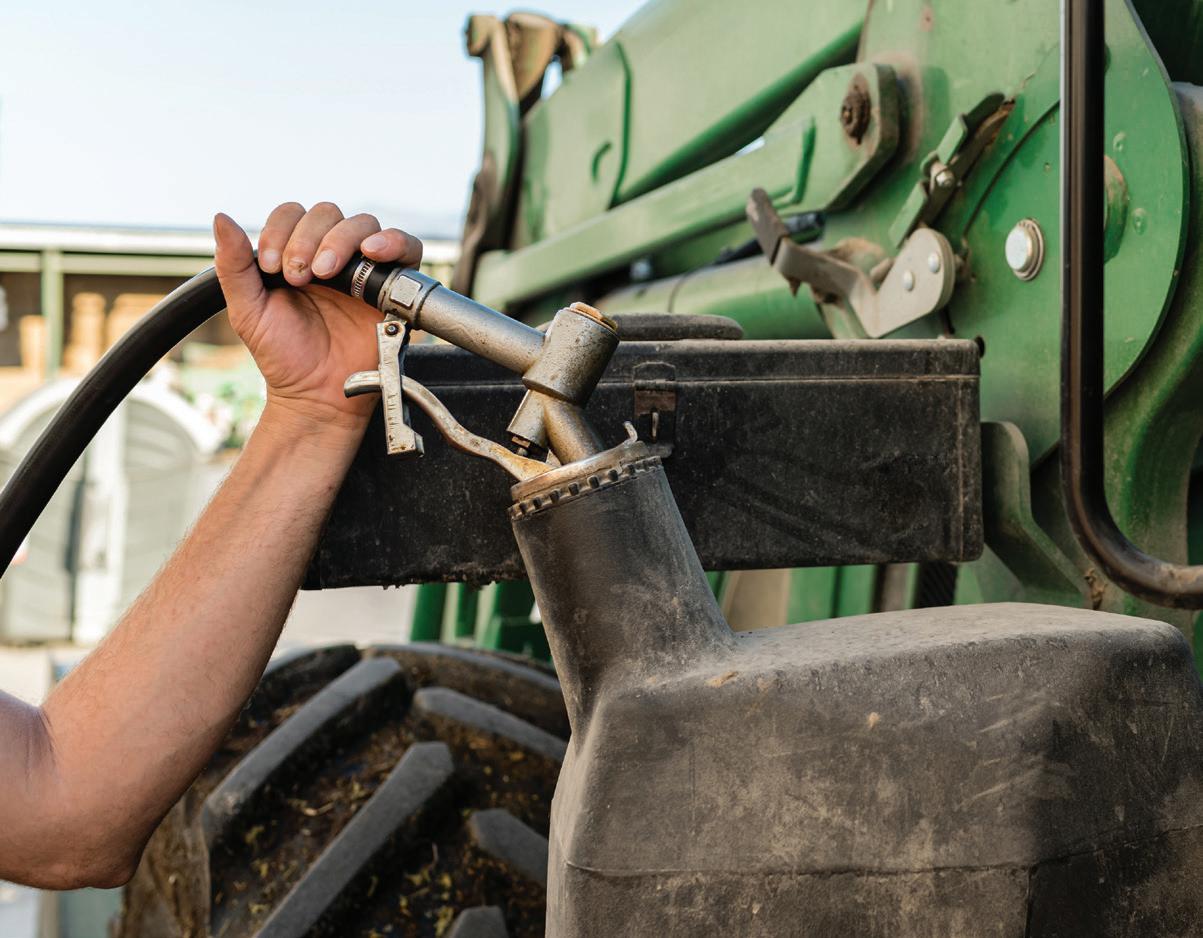
This wasn’t all good news, though. With record commodity prices came record input costs which has made for nervy times as farmers make marketing decisions for 2023.
The Farm Input Price Index for the second quarter of 2022 saw the biggest year-over-year increases of inputs across the country. Total input prices rose by 17.4 per cent and no province was safe from these increases. The Prairies saw the largest variable increases with Saskatchewan at a 21.5 per cent rise, Manitoba at 19.6 per cent and Alberta close behind at 19.2 per cent.
Two of the largest areas of increase were in fertilizer and fuel.
“Prices paid by farmers for fertilizer were up by over fourfifths (80.8%) in the second quarter of 2022 compared with the second quarter of 2021,” states the Index report. “Farmers paid nearly four-fifths (+78.5%) more for machinery fuel in the second quarter of 2022 compared with the same quarter in
2021, and more than triple (+211.0%) the 16-year low seen in the second quarter of 2020, at the onset of the COVID-19 pandemic.”
Things like commercial seed remained unchanged while pesticide and insurance saw a much smaller rise than fuel and fertilizer, but a rise nonetheless.
Even with this sticker shock for farmers, Desmond Sobool, manager of economics and principal economist with FCC, says the high commodity prices cancelled out these rises in inputs so farmers saw record high margins.
“We estimated the margins in 2022 were well above the fiveyear average in Saskatchewan. And then what we’re seeing for 2023 is continued increase in costs, however, at a much lower rate than last year.”
At a two per cent increase for fertilizer, a four per cent increase for fuel and overall a five per cent increase in Saskatchewan predicted for 2023, this is a much less dramatic increase than last year, says Sobool. Tracking input
costs across the Prairies, the numbers are similar
Even with these increases, Sobool says they predict revenue margins higher than the five-year average. However, there are still global issues that are causing volatility in the markets, as well as supply chain issues.
“Things are still looking good, but this is where producers will have to really rely on utilizing risk management practices. They can’t be necessarily an expert in all areas, so you know, leveraging accountants and building collaboration with input resellers to be able to provide guidance on managing their business,” says Sobool.


With other global problems, such as severe drought in Argentina, Sobool says to expect high corn and soybean prices for the 2023 crop year.
“We’re seeing that increased demand for biofuels and renewable fuels,” he says. “There’s been recent announcements of additional crush capacity in the Prairies, so, for canola, that would be an area where there might be some marketing opportunities.”
Despite issues beyond the average farmer’s control, some will be able to lessen their fuel inputs, such as those situated close to processors, namely canola crushers, says Sobool.
Access has also been a challenge for farmers. Having a strong relationship with retailers and making sure they can supply what farmers need is going to be key as Sobool believes they can also advise on when to have some extra supplies available for next year.
The conflict between Russia and Ukraine is causing challenges as natural gas supplies have been disrupted. This has caused
“We’re seeing that increased demand for biofuels and renewable fuels. There’s been recent announcements of additional crush capacity in the Prairies, so, for canola, that would be an area where there might be some marketing opportunities.”
- Desmond Sobool

certain EU countries to shut down fertilizer production, which has driven up the global price. That does give Canada a chance to step in and increase production of potash to try and fill those holes in the market, he notes.
The Mississippi River is also at an all-time low so anyone relying on those fertilizer imports via the waterway will also see a disruption in that supply chain, but Sobool says that will have more of an impact in Eastern Canada rather than the Prairies.
With so much volatility, uncertainty and big decisions to make, the most rewarding part of Karen Fatteicher’s job is helping farmers “wade through those waters.” Working with clients at
So far for the 2023 growing season, Fatteicher is hearing a lot of optimism as long as those revenue margins still make sense. However, unlike other years where farmers could put down more inputs in certain areas to be on the safe side, they are needing to make those tough decisions and they need to make sense, both for their soil’s heath and wallet, says Fatteicher.
“Things like soil testing, fertility planning, your commodity marketing and even being on top of your agronomics in the field … you can’t cut your expenses and expect to continue farming in this environment. You still need to try and get the best crop you can,” she says.
Ag costs are going up in other areas as well, which are causing other issues for producers.

Machinery, farming supplies and building costs also increased in that second quarter, according to StatCan.
“If they want to grow their farms, [farmers] are still doing what they need to do, albeit they’re doing it with much more scrutiny,” says Fatteicher.
It is hard to be optimistic about those prices eventually coming down from such record highs, and Fatteicher doesn’t know what could happen that would tip those costs downward instead of continually rising or staying consistent over the coming years.
“Things like soil testing, fertility planning, your commodity marketing, and even being on top of your agronomics in the field … you can’t cut your expenses and expect to continue farming in this environment. You still need to try and get the best crop you can.” - Karen Fatteicher
Some seeding paths wrap around sloughs or irrigation pivots. Other curve balls take the form of hills and uneven ground. Come seeding time, these challenges require solutions. This year, Väderstad has added turn compensation to its current precision control system, and Pillar has a new disc/hoe planter that brings added size, contour capability and a new transport and storage configuration all folded together. These build on existing robust systems.
Väderstad is a farm machinery company with manufacturing plants in Sweden, North Dakota and Langbank, Sask.
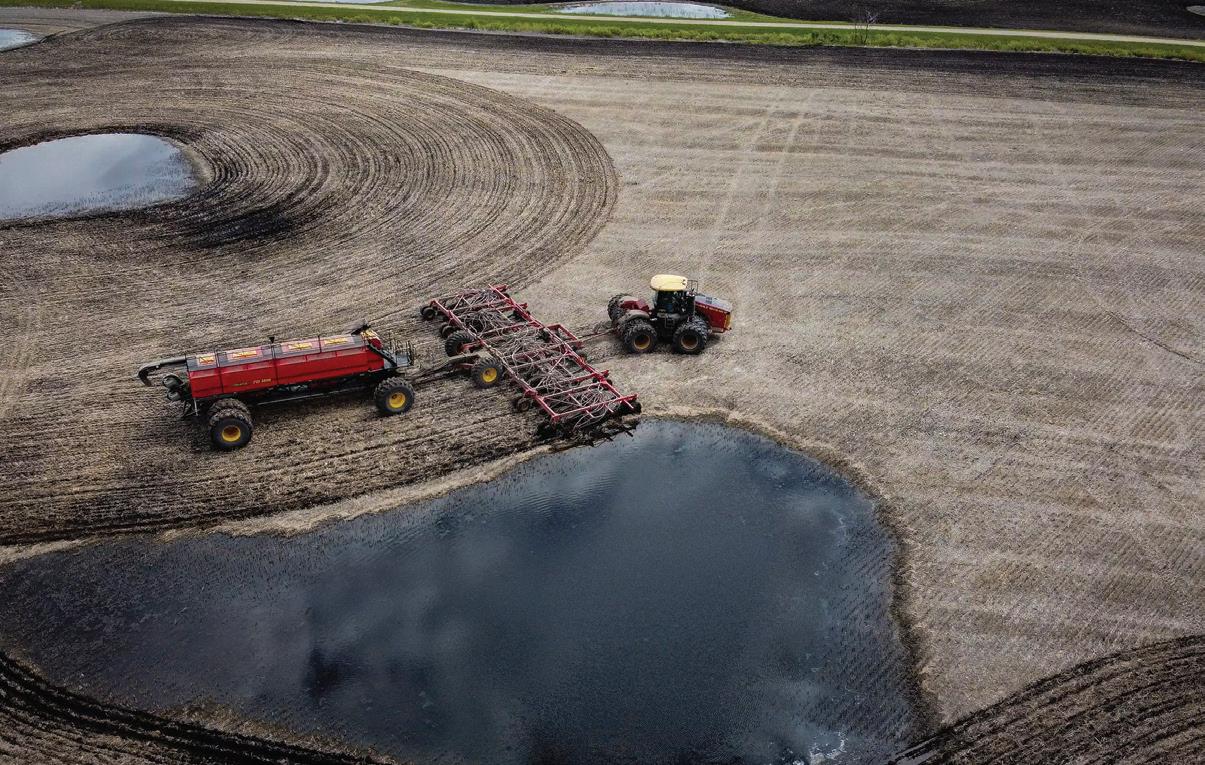
Väderstad’s Seed Hawk Air Seeder was developed in the early '90s, and its dual knife system was one of the pioneers for no-till in Western Canada. The independent opener offers precise seed depth, while the consistent seed-to-fertilizer placement ensures early season uptake of vital nutrients, all in a no-till application.
To understand how the new SCTx system works, we need to look at the anatomy of the Seed Hawk Air Seeder and the brains that control it.
The seed and fertilizer delivery through the Seed Hawk toolbar and the air cart are controlled by the iCon app from an iPad. The toolbar is divided into 10-foot sections that raise or lower
depending on whether it’s delivering product or not. This system allows prescription mapping that co-ordinates with section control to apply variable seed and fertilizer rates, by location on the field and across the width of the toolbar. It uses GPS technology to follow the track of the machine, turning off sections if it detects overlap.
Rob Stone farms at Stone Farms, a 9,000-acre family-run operation near Davidson, Sask.
He uses an 84-foot Väderstad Seed Hawk XL toolbar and a 980 bushel icon Väderstad Seed Hawk cart. “It’s a valuable piece of equipment for us because of the sectional control and variable rate capabilities,” he says.
While equipment becomes more technical and digitalized, Väderstad is focused on keeping the system accessible. Most farmers are familiar with tablets and likely have one or more in their cab already.
“We have the wireless switchbox as well,” says Stone. “I still really like having a switch to manually shut things off.”
The tablet offer wireless connectivity with the machines, but Stone opts to wire them in.
“It’s just one little wire, whereas other ones have harnesses and cables in order to operate the system,” says Stone.
Arthur Ward, vice-president of Prairie Moon Acres near HitchcockDECADES OF RELIABLE RODENT CONTROL
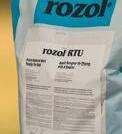
CONSISTENT
• INNOVATIVE


To find a seed dealer near you visit www.seednet.ca or call 403-808-7738







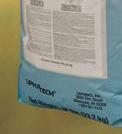



Bay, Sask., farms 8,500 acres with 1,600 under irrigation. Currently, Ward has a 60-12 Seed Hawk drill with an 800 bushel tow behind cart. Ward’s initial attraction to Väderstad was sectional control and iCon. He also likes the cloud-based system for data storage. One year when his tablet broke, he was able to replace it and get up and running again with little downtime.
The Fenix III metering system, iCon and the 10-foot sectioning all create a great system for precision seeding and fertilizing. The new SCTx system elevates this to include turn compensation.
The company says that a secondary GPS receiver mounted on the cab of the tractor allows the operating systems to create more of a predictive path for the air seeders, which allows better sectional control and turn compensation.
This will be released as an option with the MY2023 machine and forward and current customers will be able to upgrade by summer. Ward and Stone both plan to upgrade to SCTx.
“There are a lot of obstructions in [irrigated] fields like the pivot point and well heads,” says Ward. “That’s where we see the advantage of the turn compensation. It will even that rate out so you’re not overseeding on the inside and then underapplying on the outside of a turn.”
Stone enjoys the continual innovation, which makes time in the cab less stressful.
“It will make the operator experience better,” says Stone. “For very little investment, and considering the cost of inputs, it’s nice to have those little extras.”
Pillar expands its lineup with the Stealth Flex 71
Pillar is a small manufacturer based out of Warman, Sask., that has been growing its lineup of seeding equipment since 2005. It all began when Dick Friesen, Pillar’s president and general manager, was approached to develop a single-disk, double-shoot opener.


“We sold the first row units as retrofits, then we designed the toolbars we needed,” says Friesen. “Now we’ve built from 30, 40, 50, 60 to 71 feet.”
Ross Straub of Border View Farms near Hilda, Alta., recently upgraded to the latest Pillar drill, a Stealth Flex 71, or SF-71. He currently seeds 6,000 to 7,000 acres each year. Being in a dry, windy area means they utilize a stripper header, leaving standing stubble to catch snow. Much of the farm is hilly, uneven terrain. The SF-71’s flexibility follows the undulating land to create an even seed depth. Residue clearance is no issue directly seeding into stripper stubble.
Border View’s first Pillar laser drill was a 50 footer purchased in 2013. With the farm’s expansion, they decided to test the



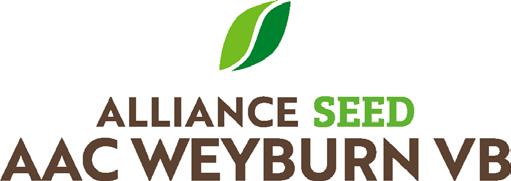

prototype of the SF-71 in 2020.
After being impressed by the effectiveness of how the prototype hugged the ground, they purchased a new SF-71 two years ago.
Getting bigger has challenges, though. With busier roads, the larger size drills can be tricky to navigate safely between farm and field. It can also take up a lot of storage space. Pillar changed it from a wing up to a folding forward design, to address these issues. Eight feet narrower, the transport width is 16 feet. It also has steering on the back wheels controlled by an app from the cab, according to Friesen.
“It makes it easier to manoeuvre when you have narrow access to a field or when storing,” says Straub.
The SF-71 carries on many features of previous versions.
The Mark III opener is a unique disc/hoe combination. A disc cuts the fertilizer trench and a seed boot cuts a ledge into the wide wall of the trench to place the seed above and to the side of the fertilizer.
“With the Pillar being a disc/hoe design, you get the trash cutting and speed of a disc but the placement of a hoe without the issue of hairpinning, which was a common issue on traditional disc air seeders,” explains Derek Tieszen, who seeds about 4,000 acres near Hepburn, Sask., with his DH-40. Single pass, the ability to seed into heavy residue and speed are what he labels the biggest trio of advantages of Pillar drills.

“I probably seed at least six miles an hour,” says Tieszen.
The Mark III’s cast openers are sturdier than the previous steel version.
“The old style worked well, but if you were in heavier land, especially when you’re in a turn, you’d notice that there was a lot of flex in the opener,” says Tieszen. “The Mark III holds much better.”
While most new precision drills are running hydraulics on every shank, or every alternate shank, Pillar opted to stay with coil springs. Straub says he likes the simplicity of the spring on the openers as opposed to hydraulic cylinders on other drills that usually have oil leaks after a few years of use.
“The old style worked well, but if you were in heavier land, especially when you’re in a turn, you’d notice that there was a lot of flex in the opener. The Mark III holds much better.”
- Derek Tieszen
It’s all about doing your best with what’s in your hands, and hoping for the best with everything that’s not.
Through thick and thin, rain and shine, good years and bad. You do the work. Try to make the right calls. Then see how it all turns out.

It takes a special kind to take on challenges you can’t see coming.



It’s why we work to make life on the farm a bit more predictable.


So you can have the confidence of being in control and rest a little bit easier. THAT’S FARMING.
KochAgSolutions.com







FOR EVERY CHALLENGE, A NEW REWARD.
